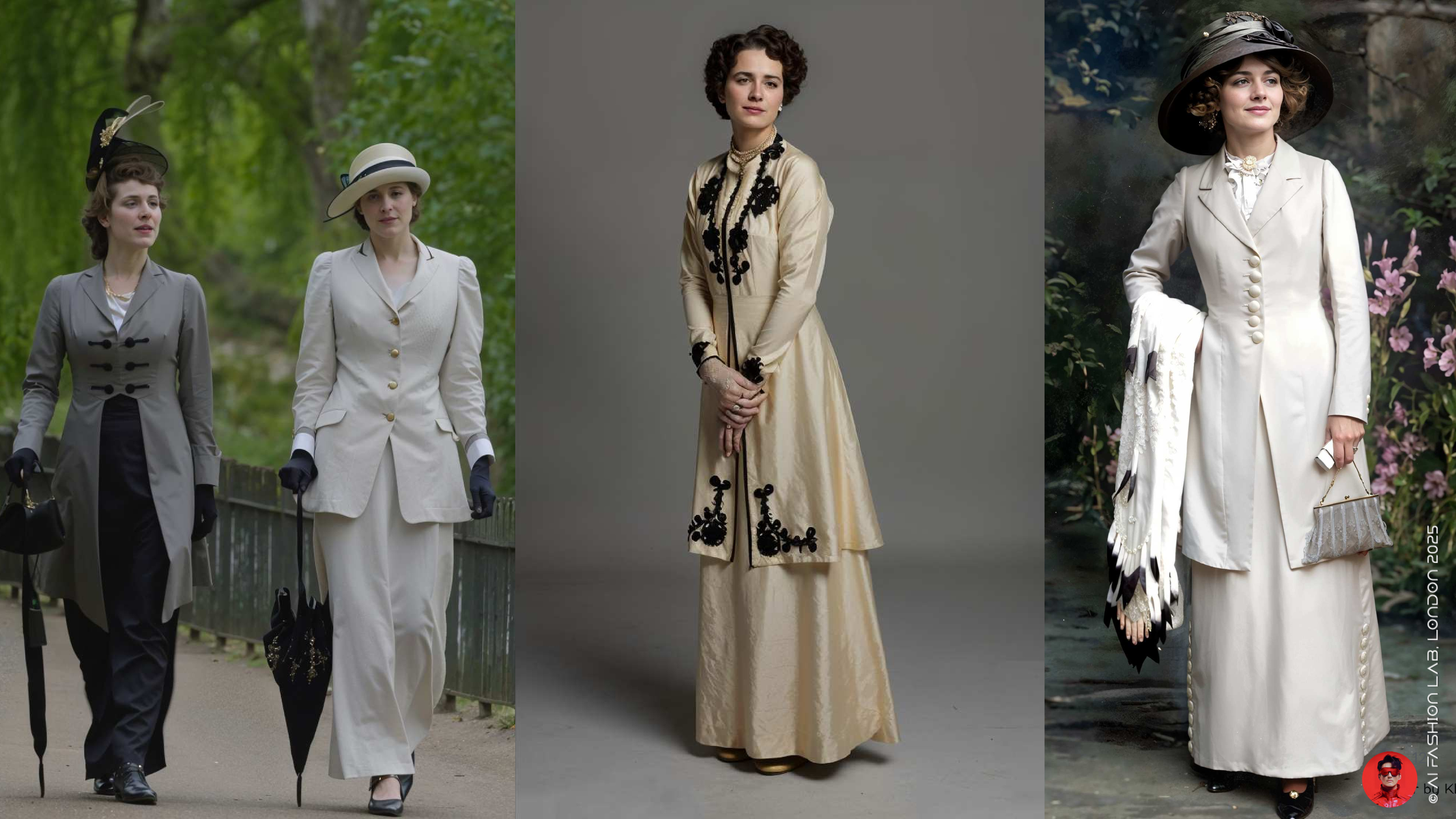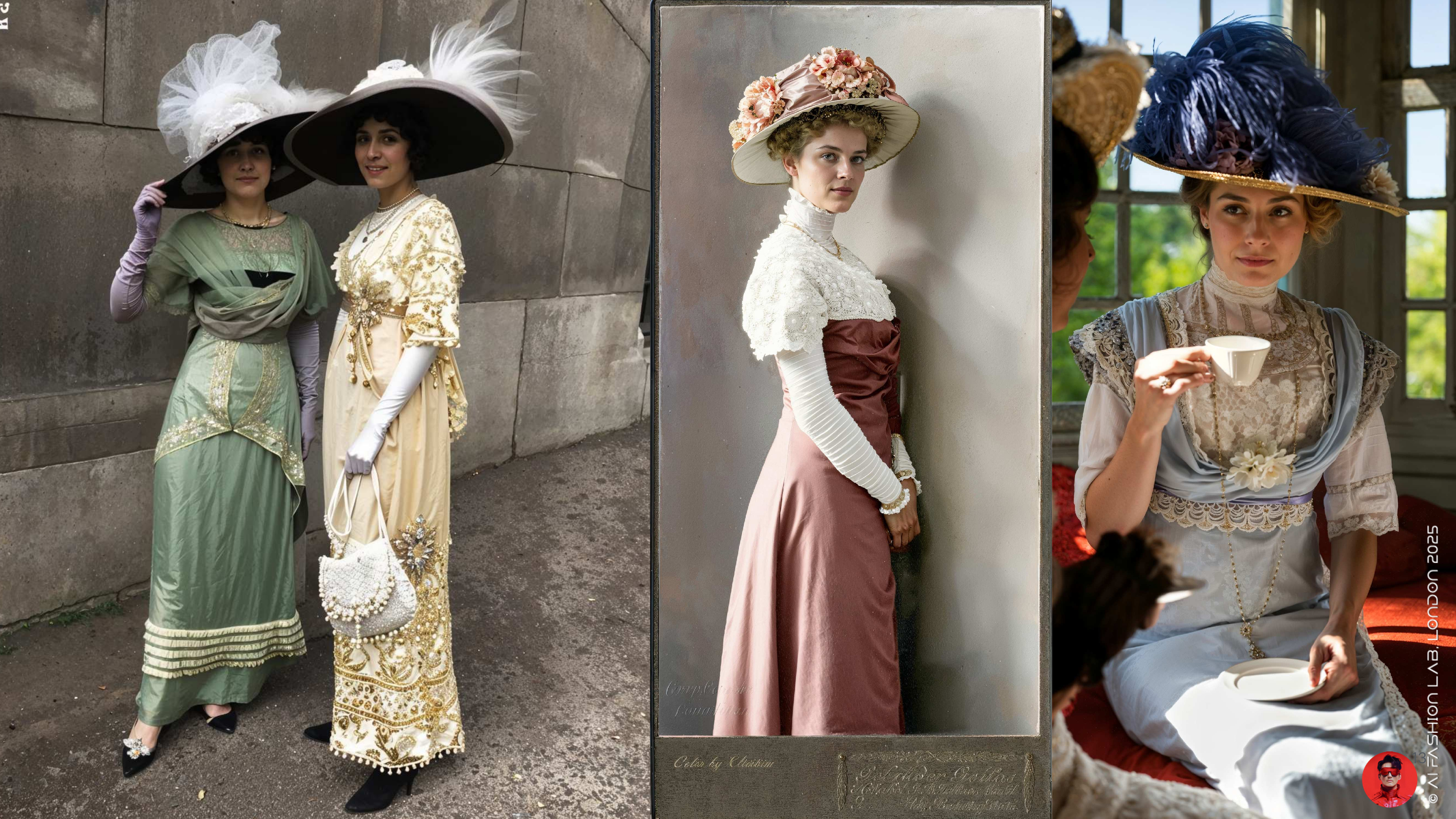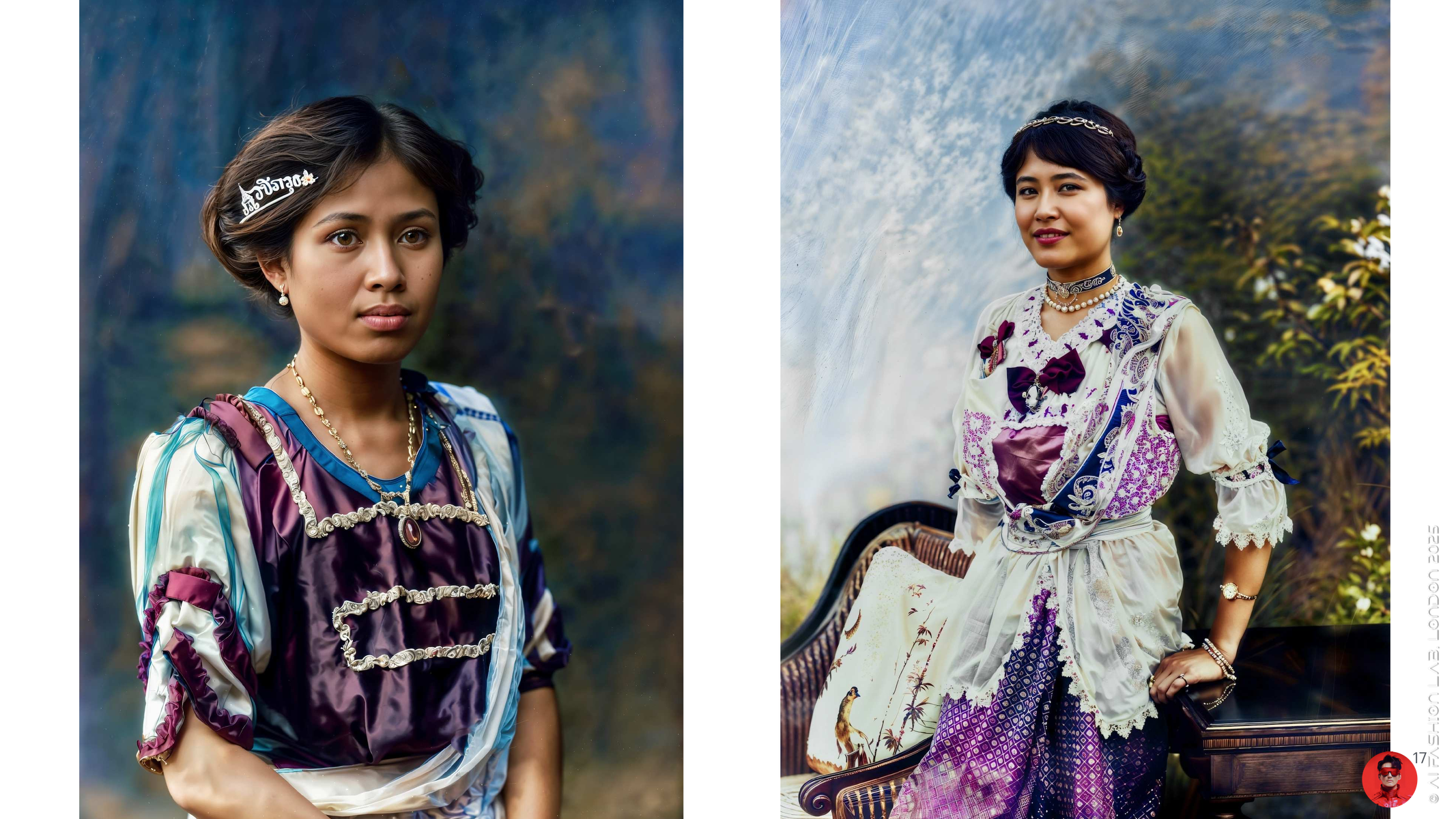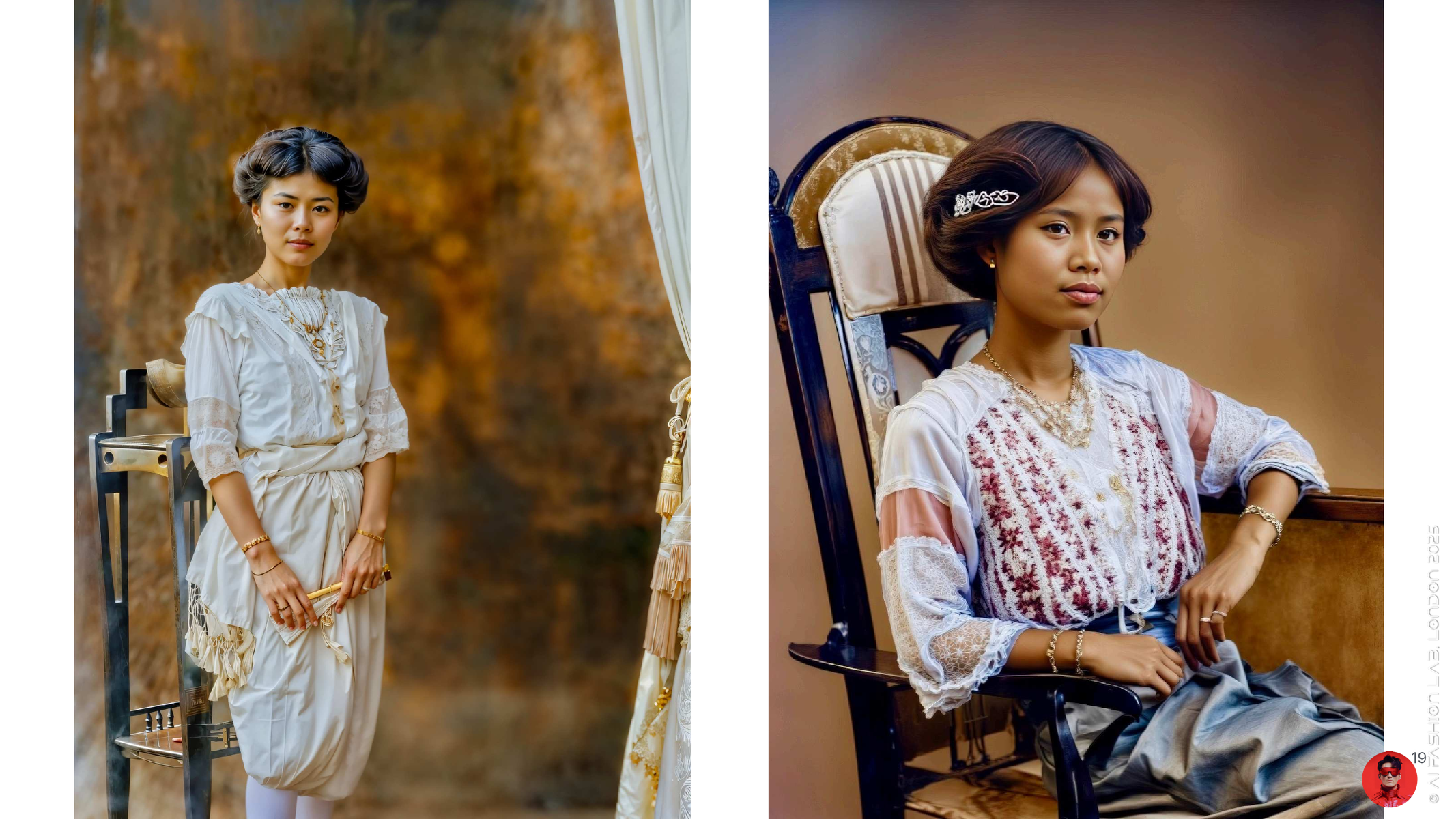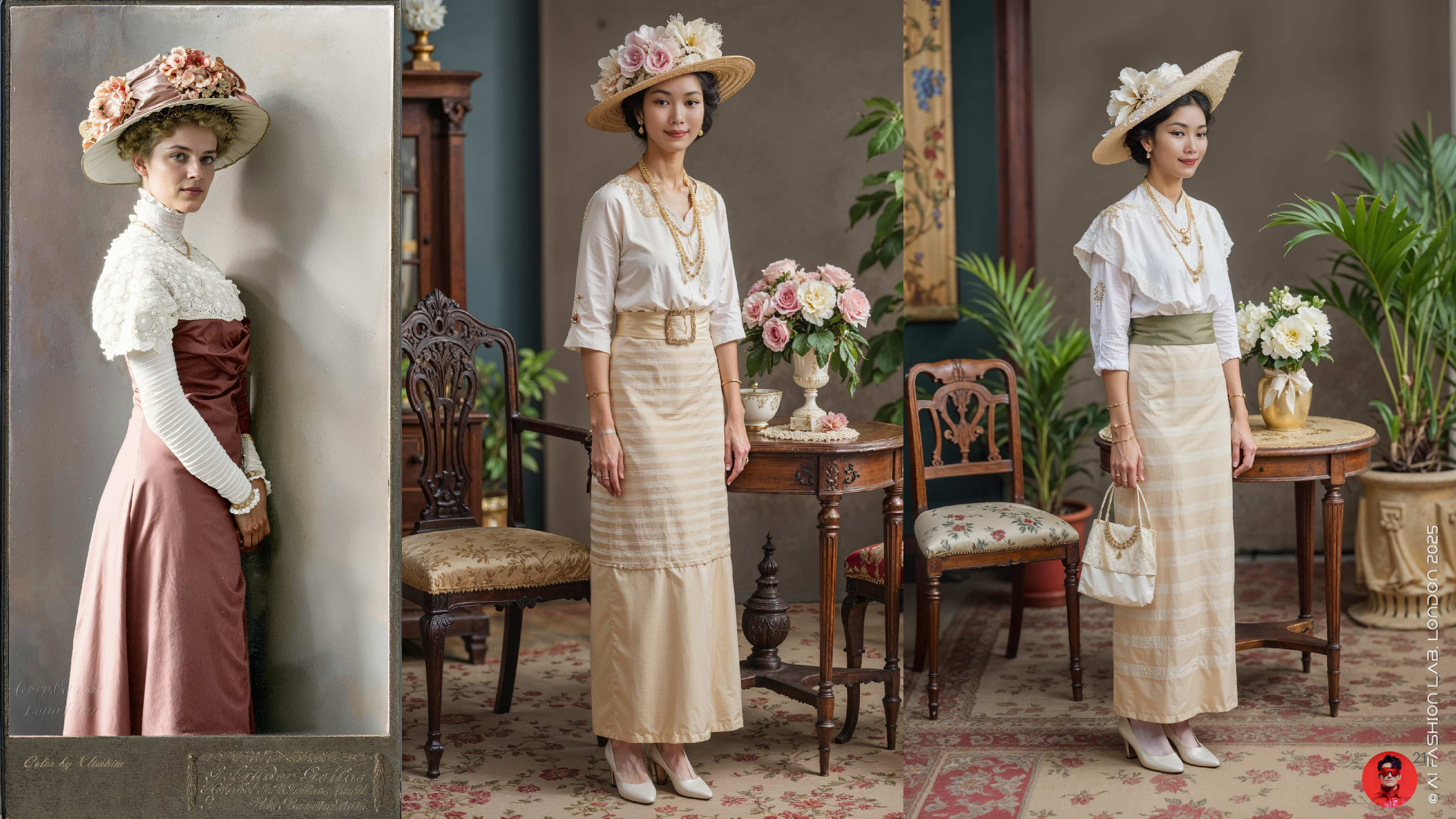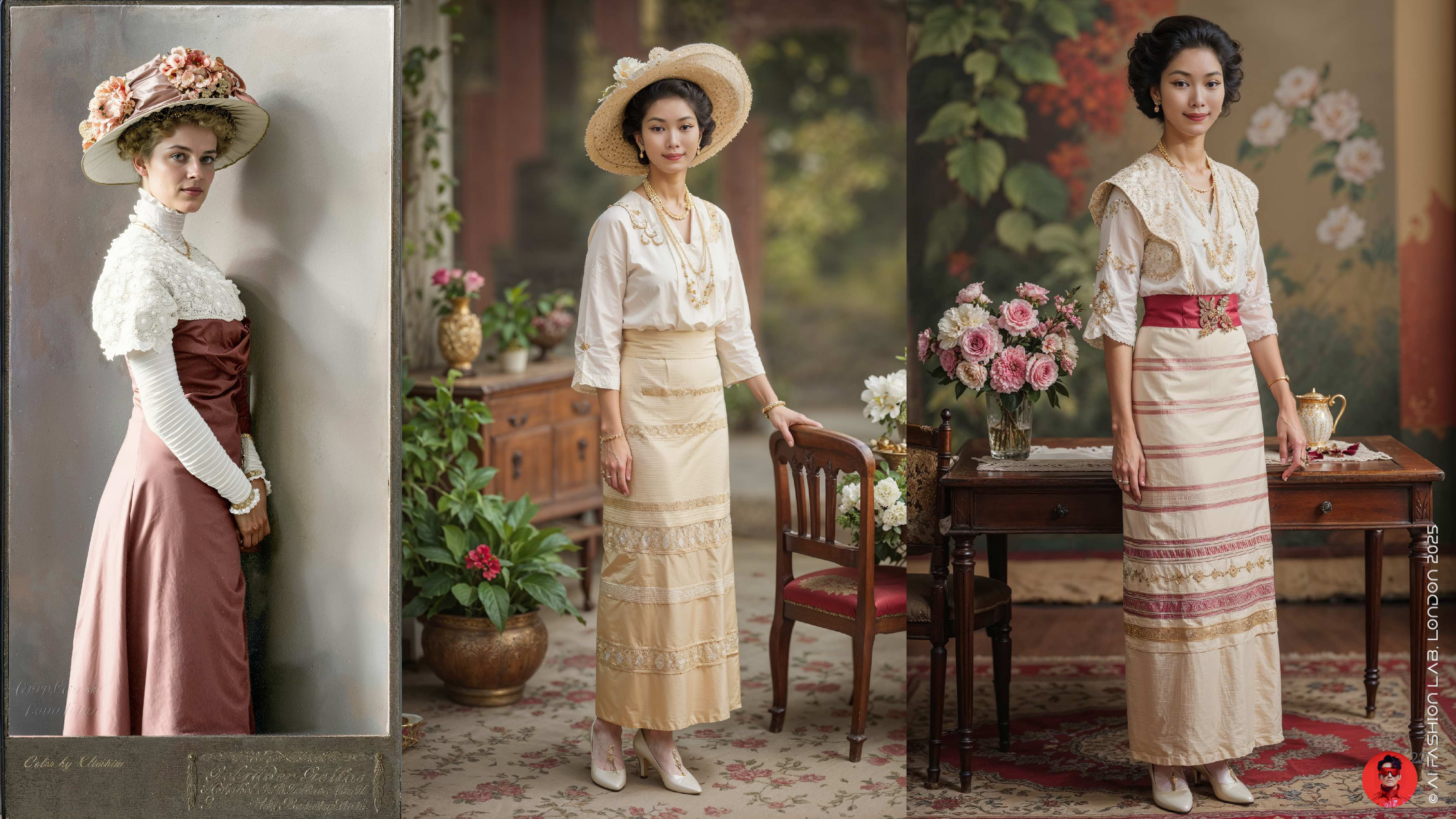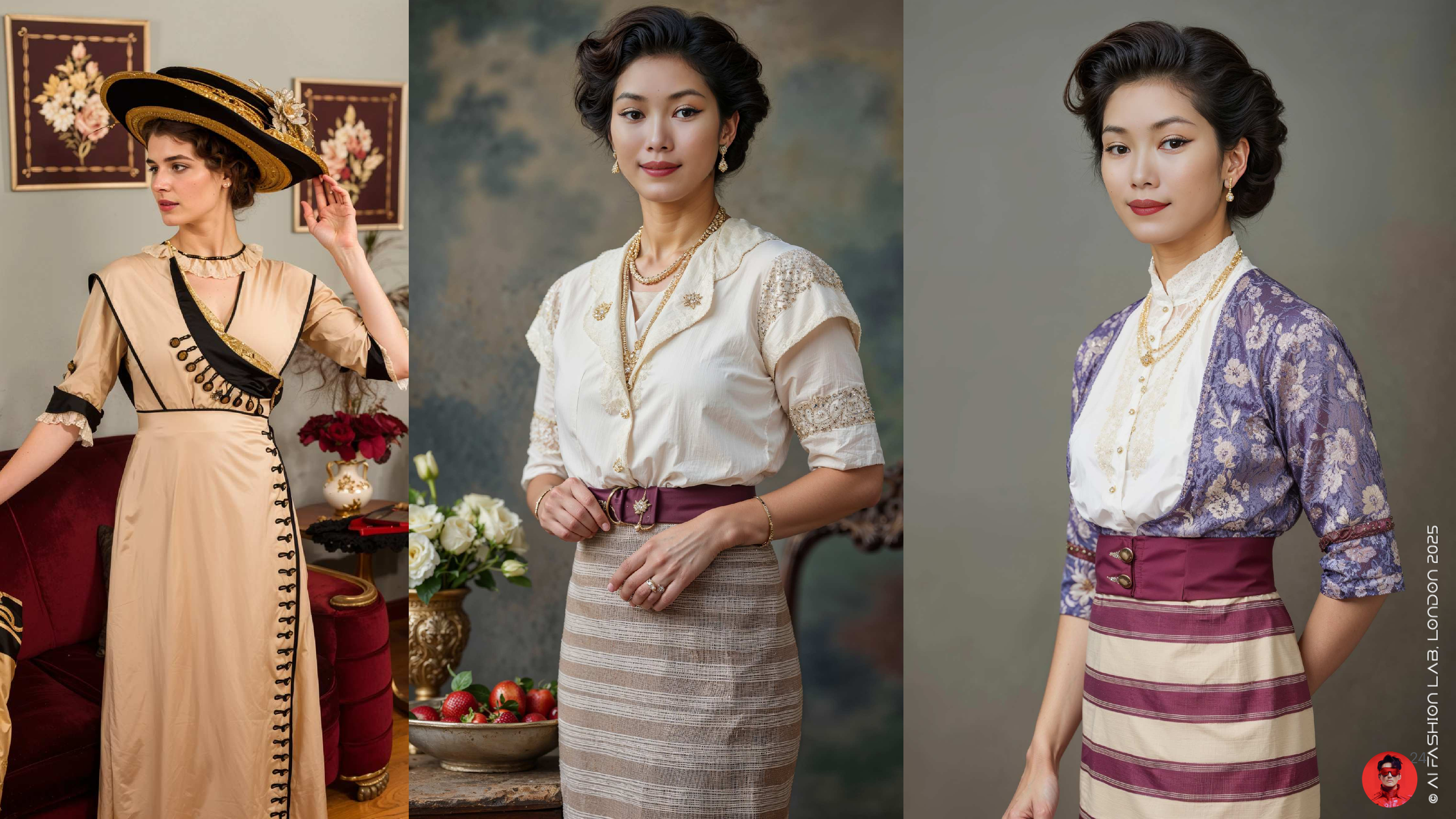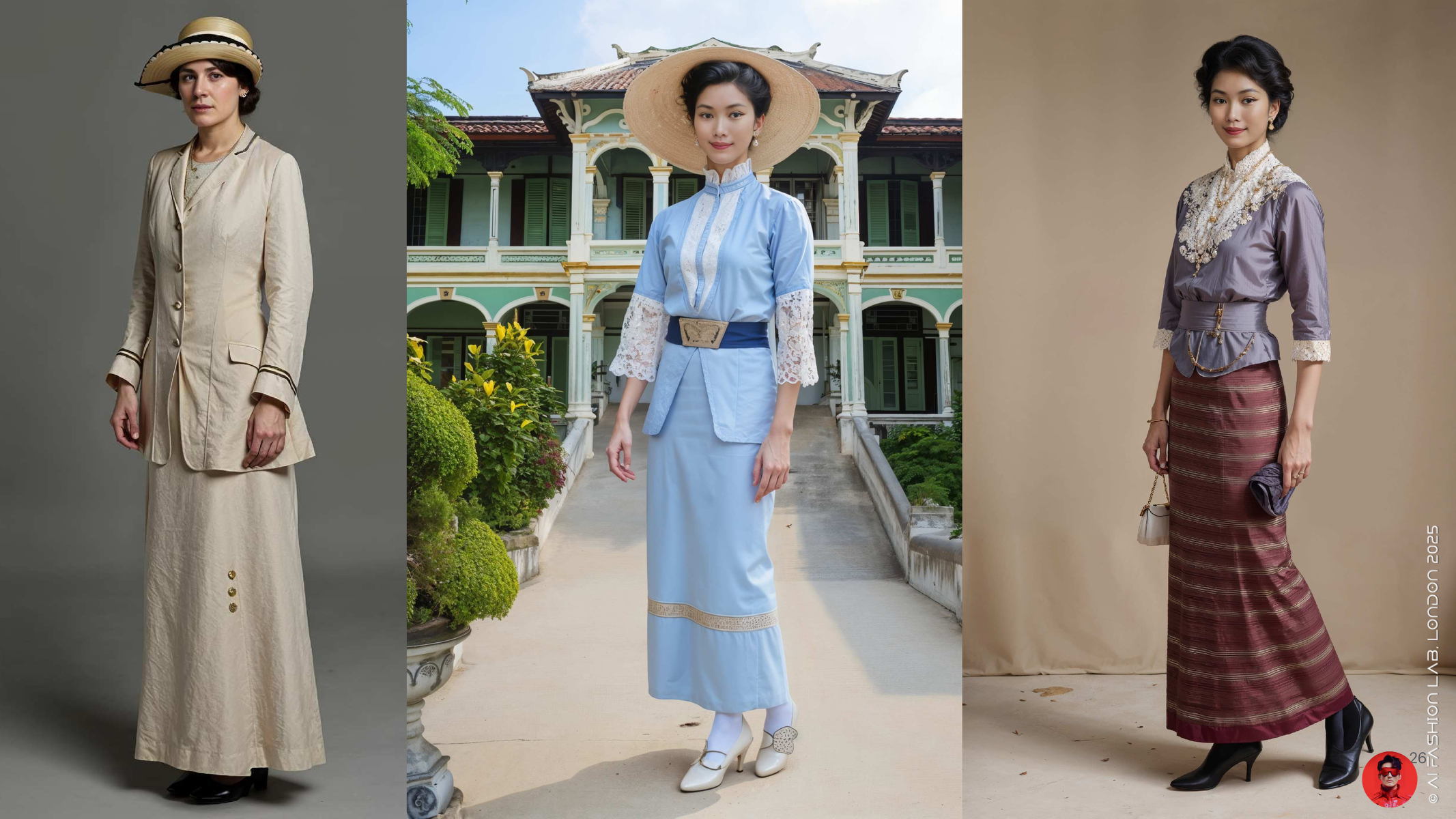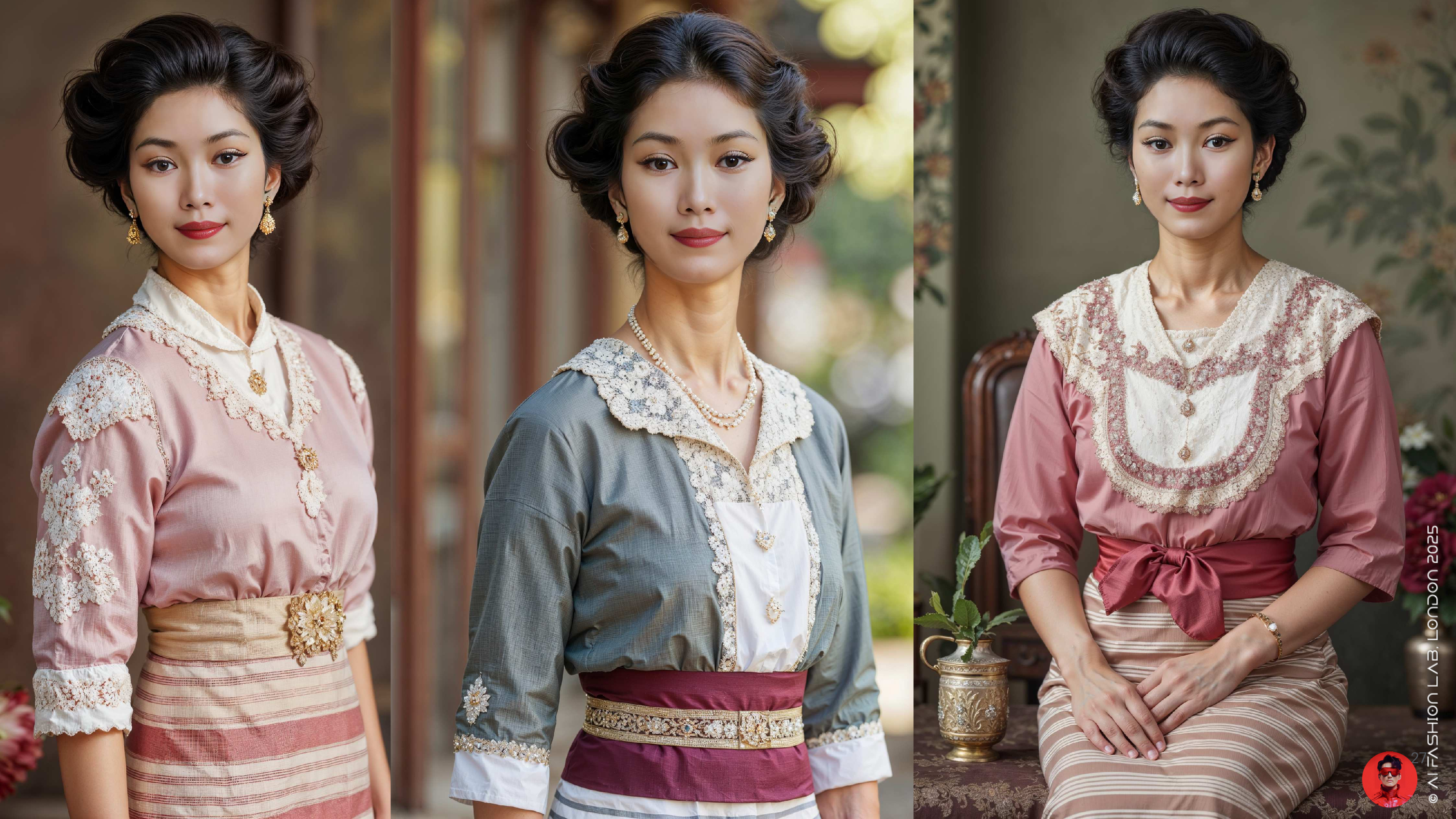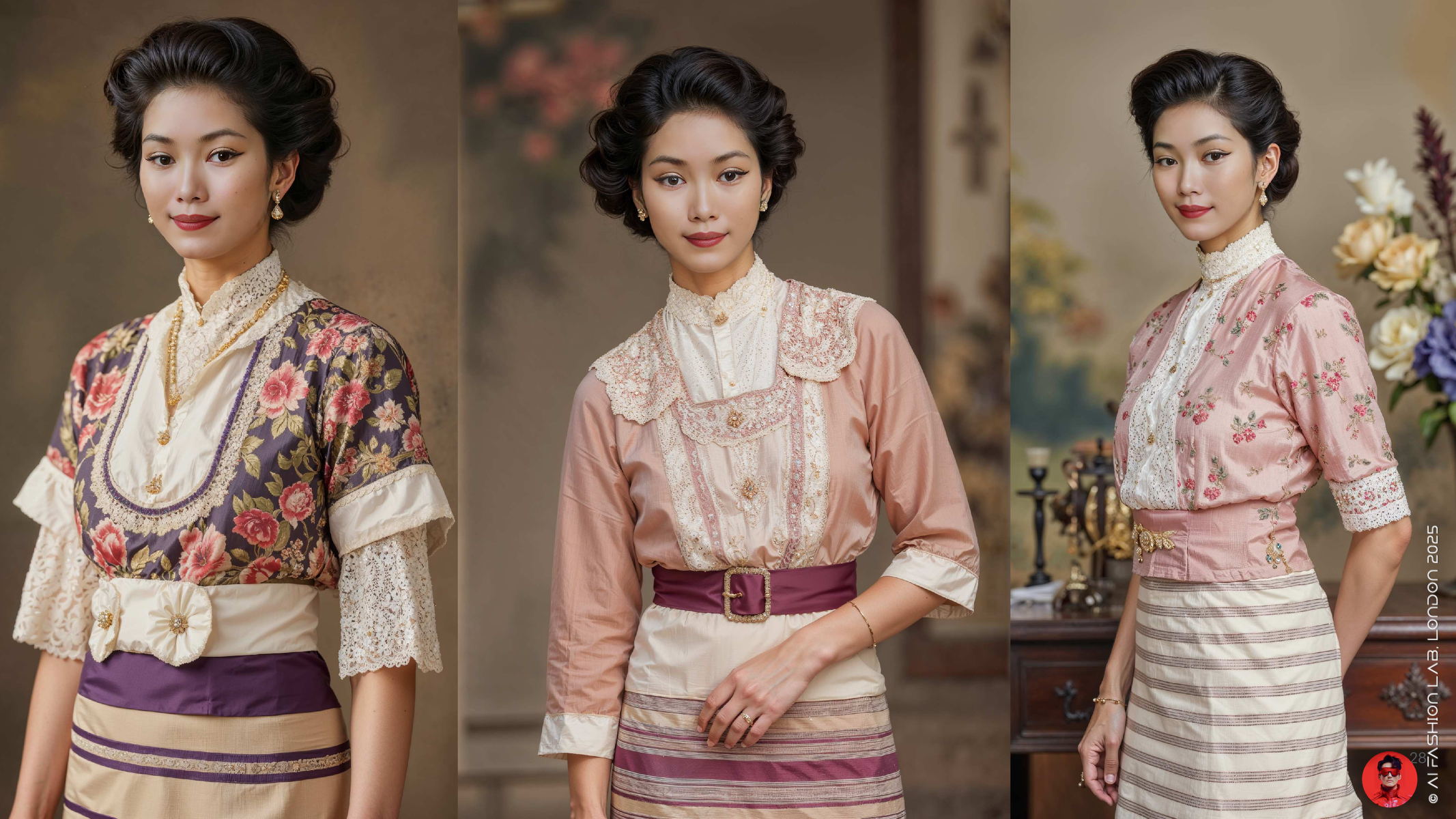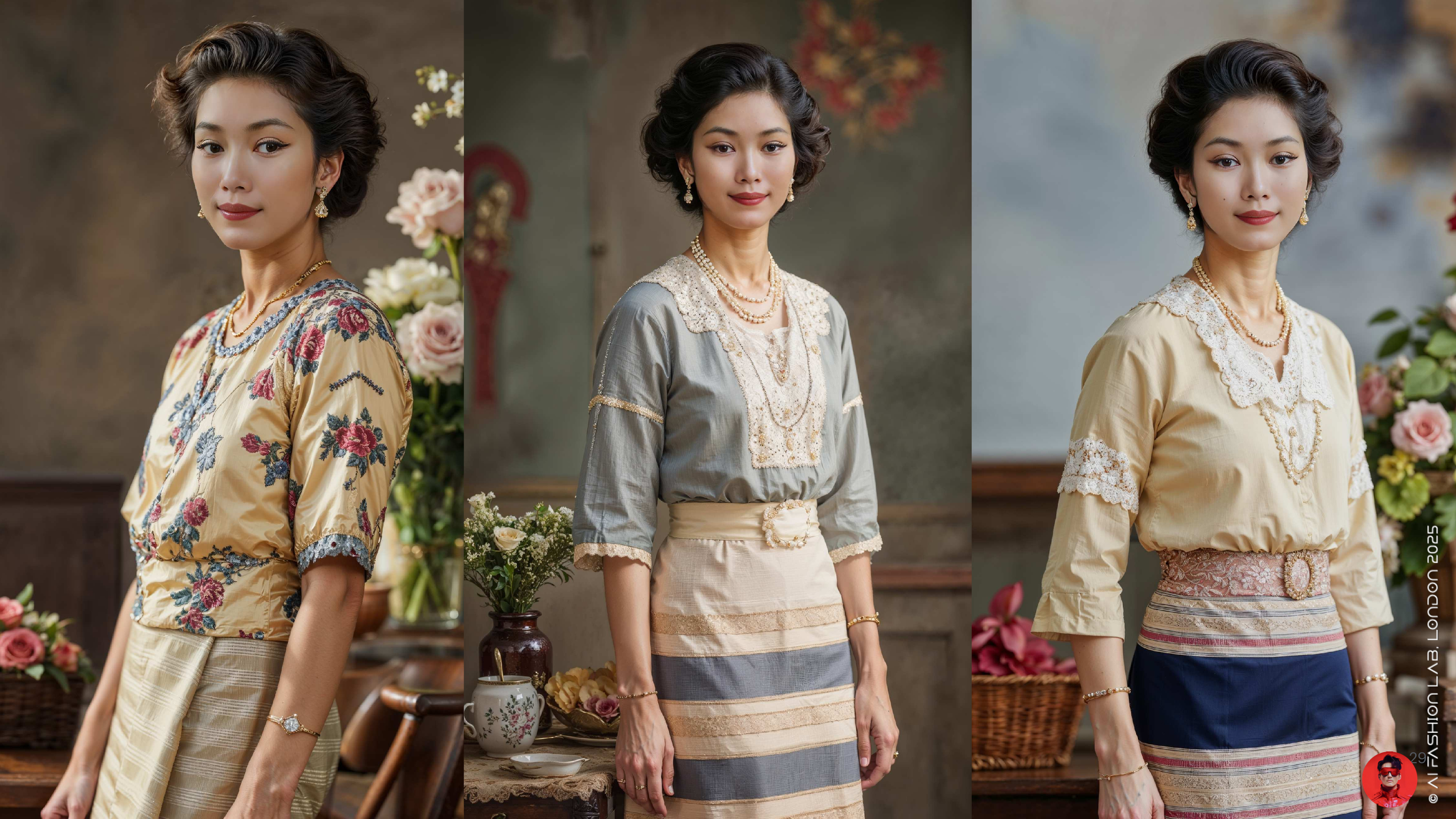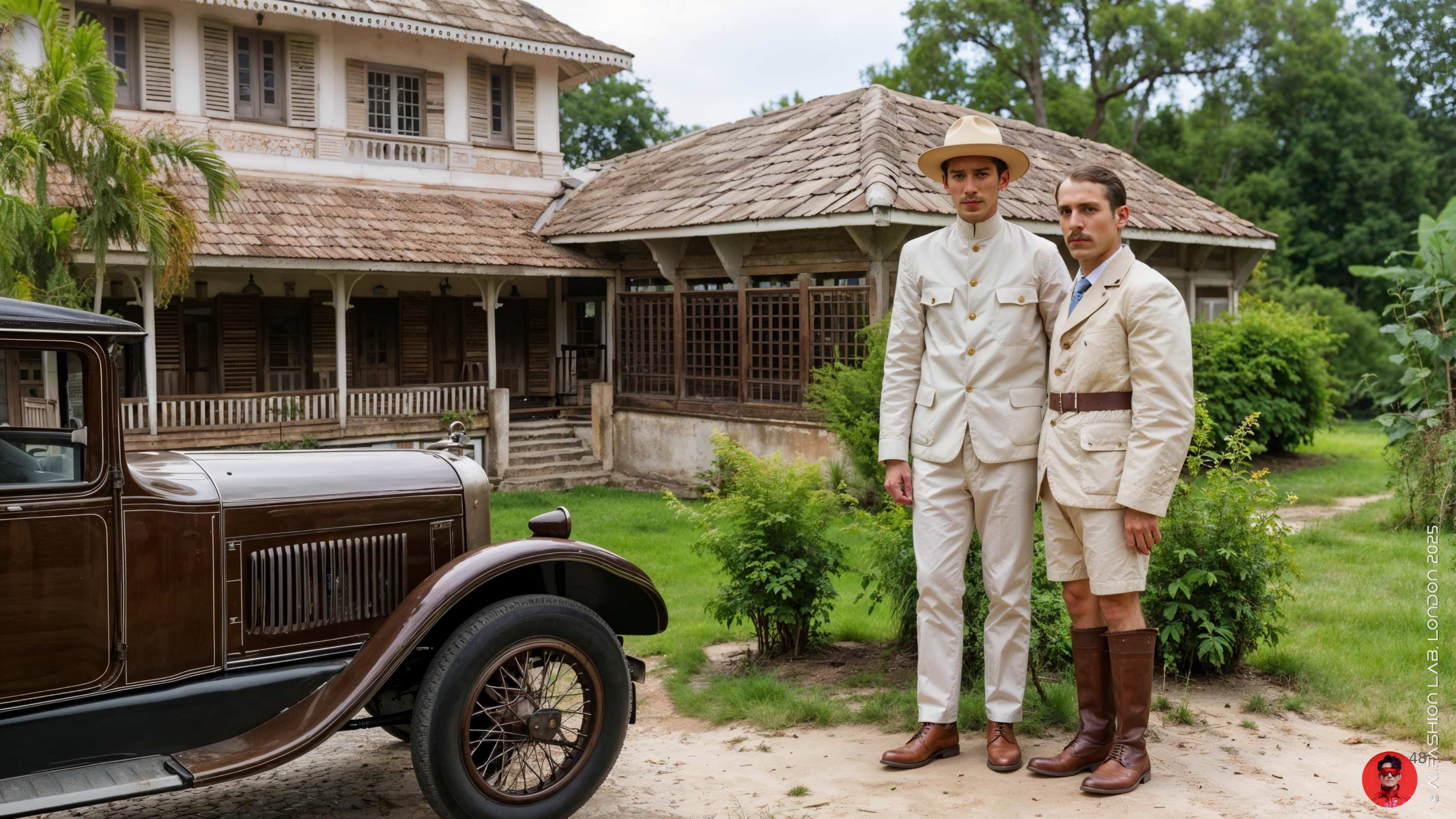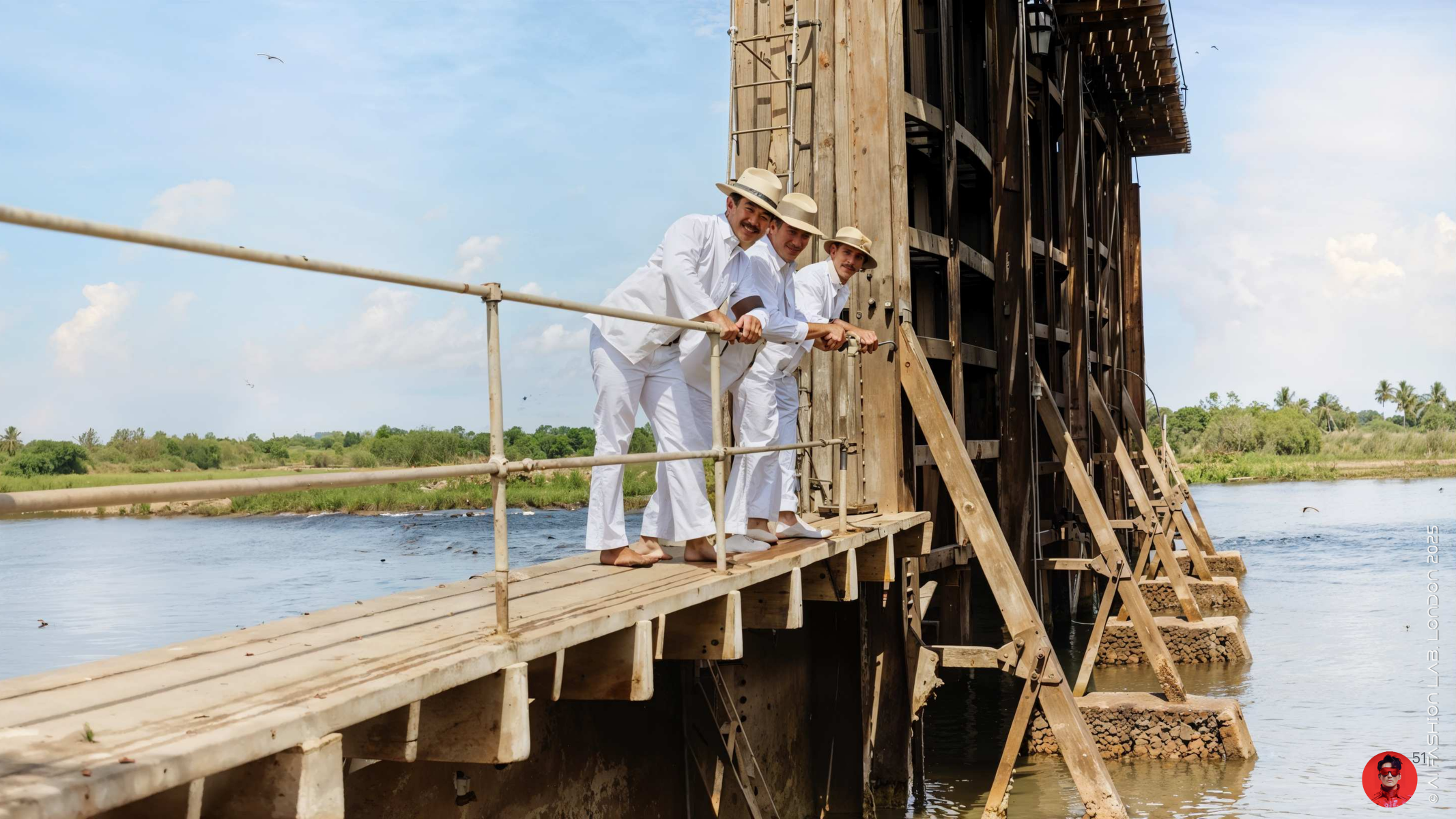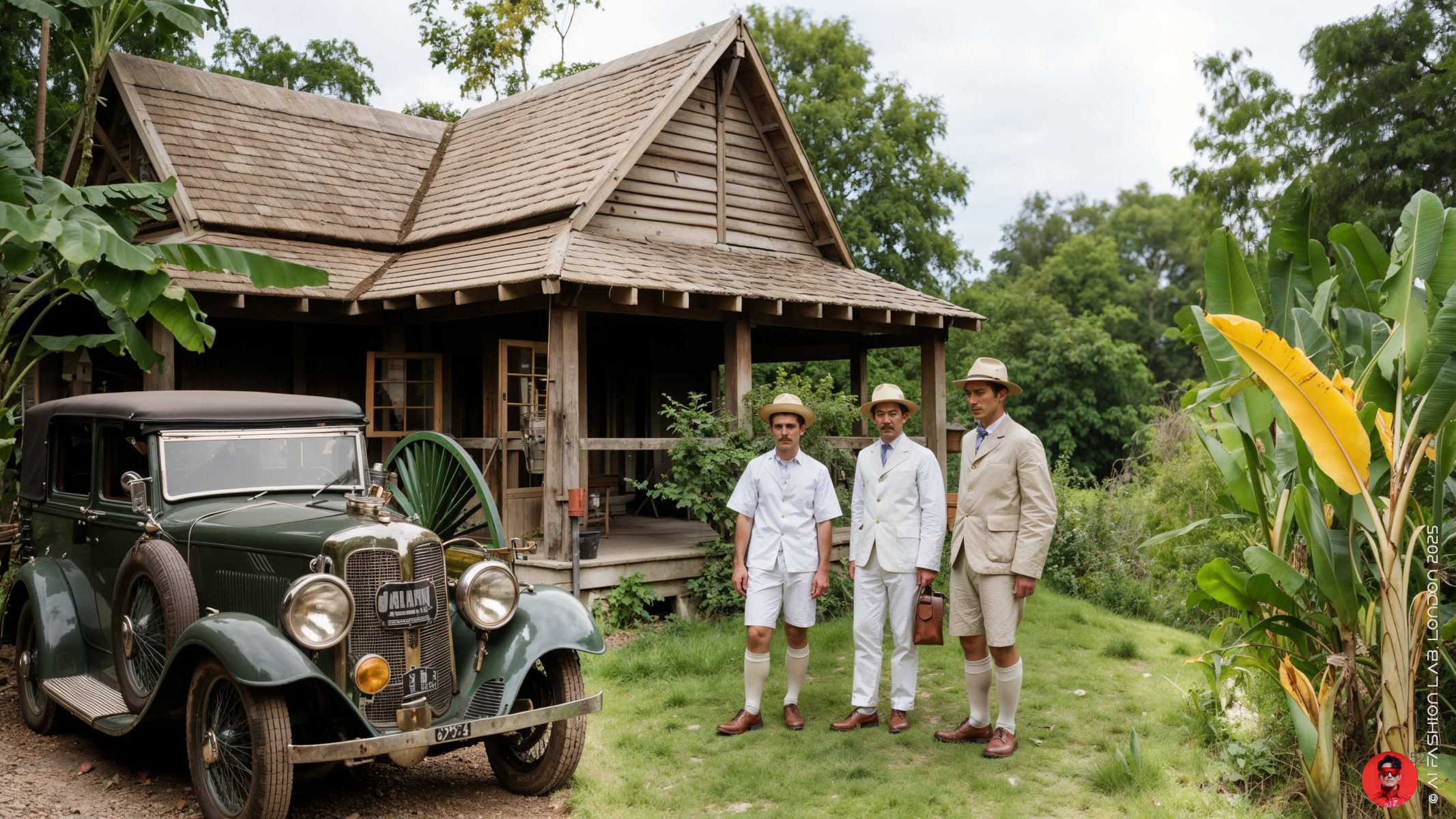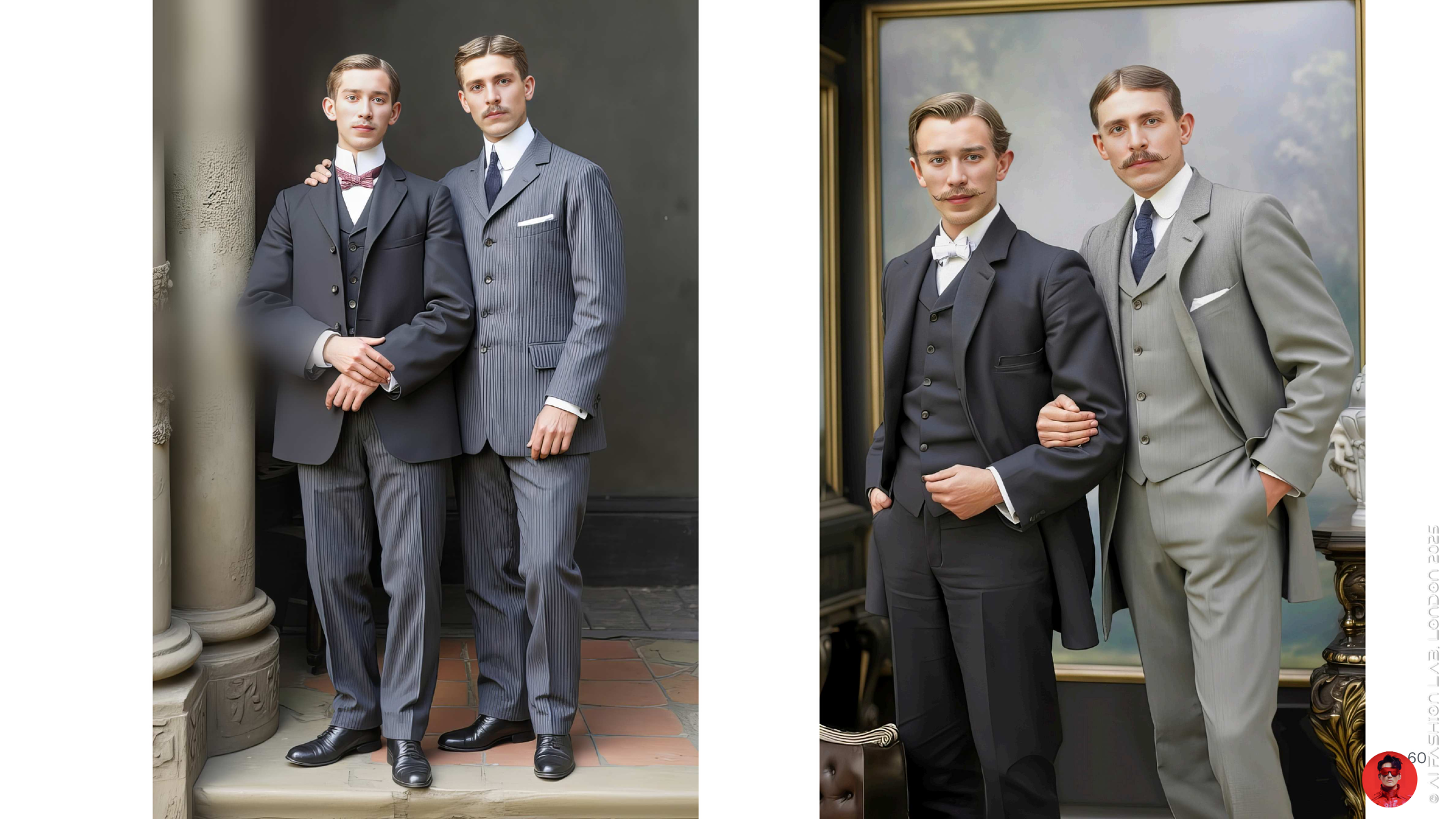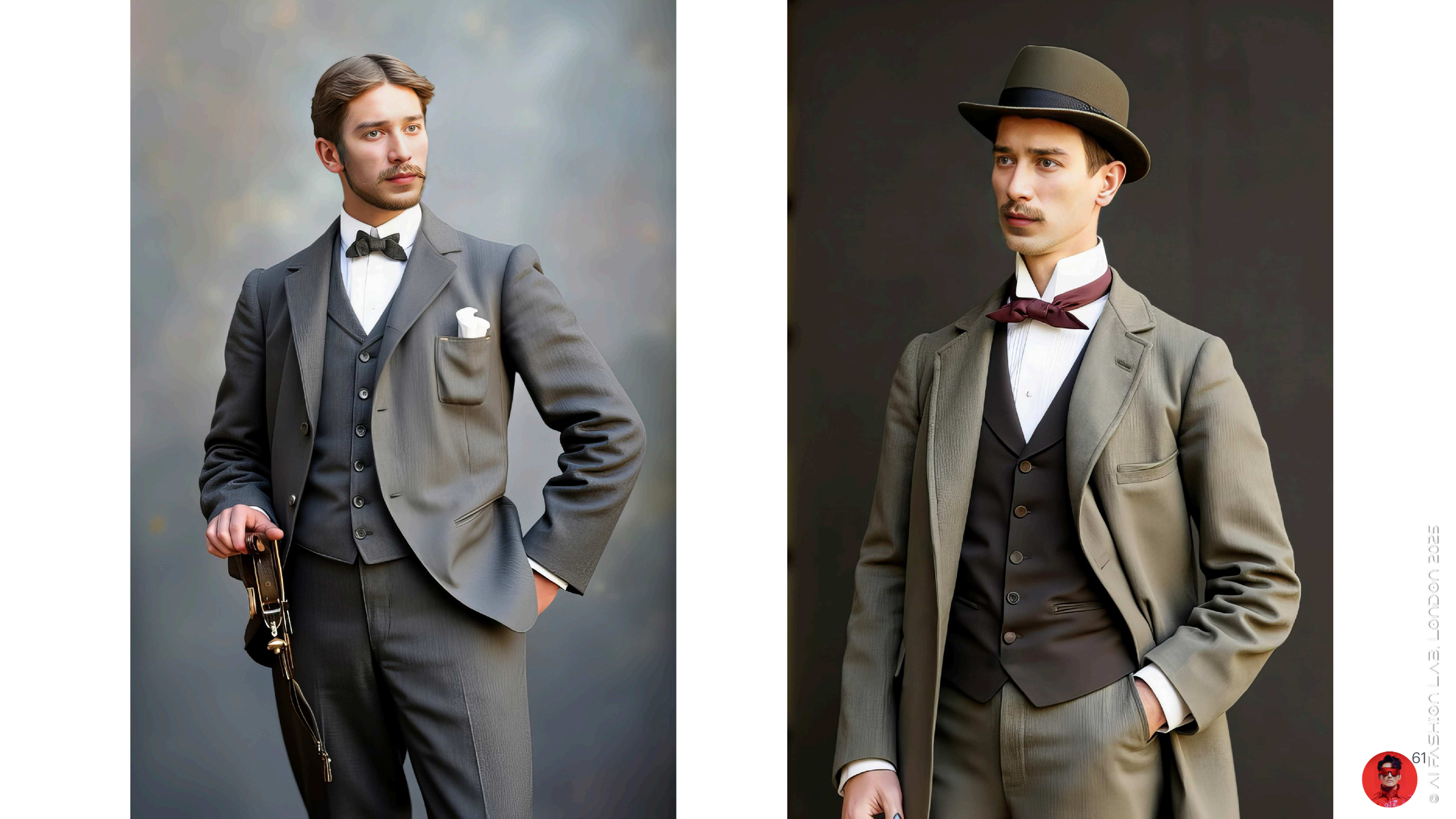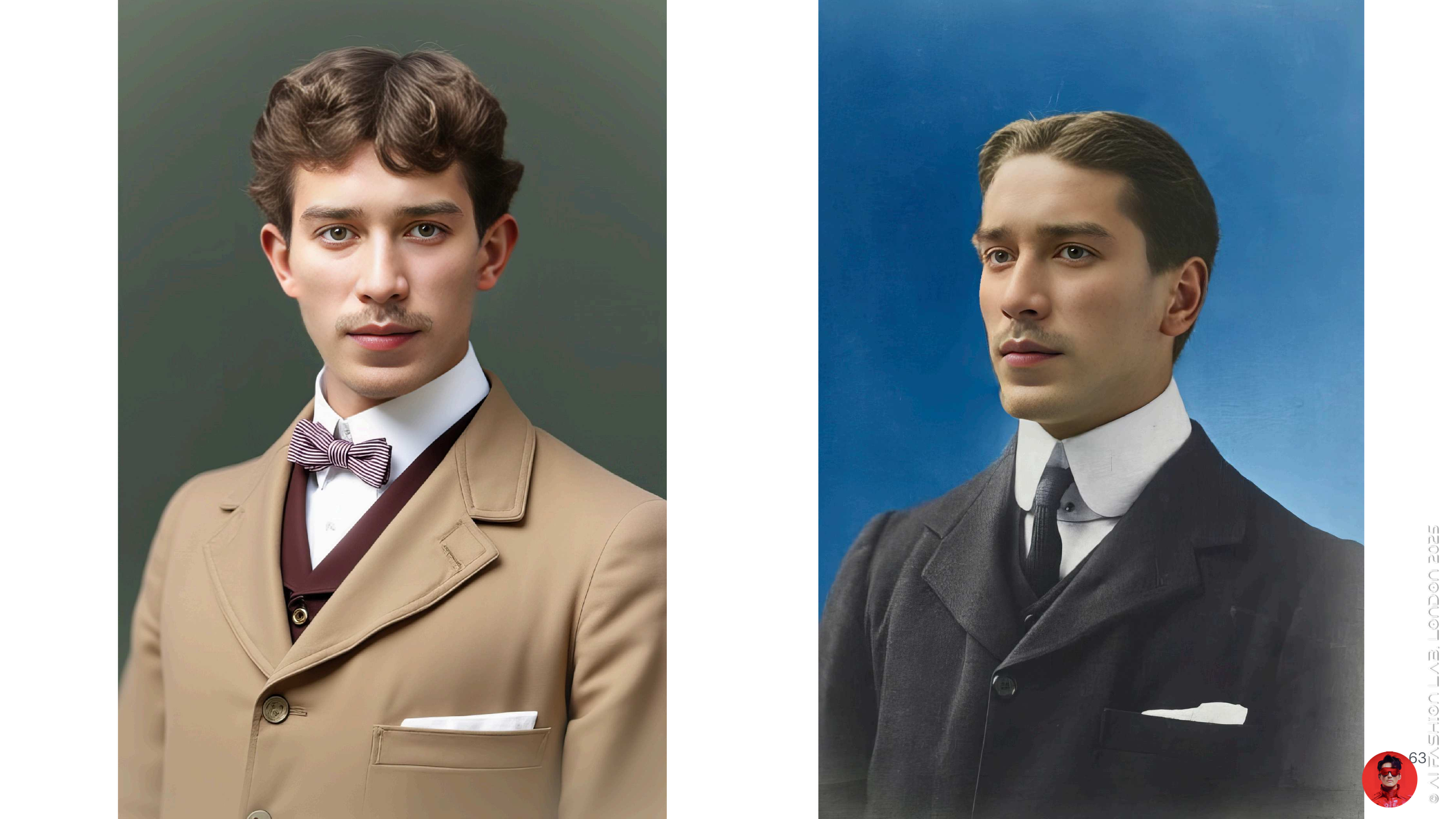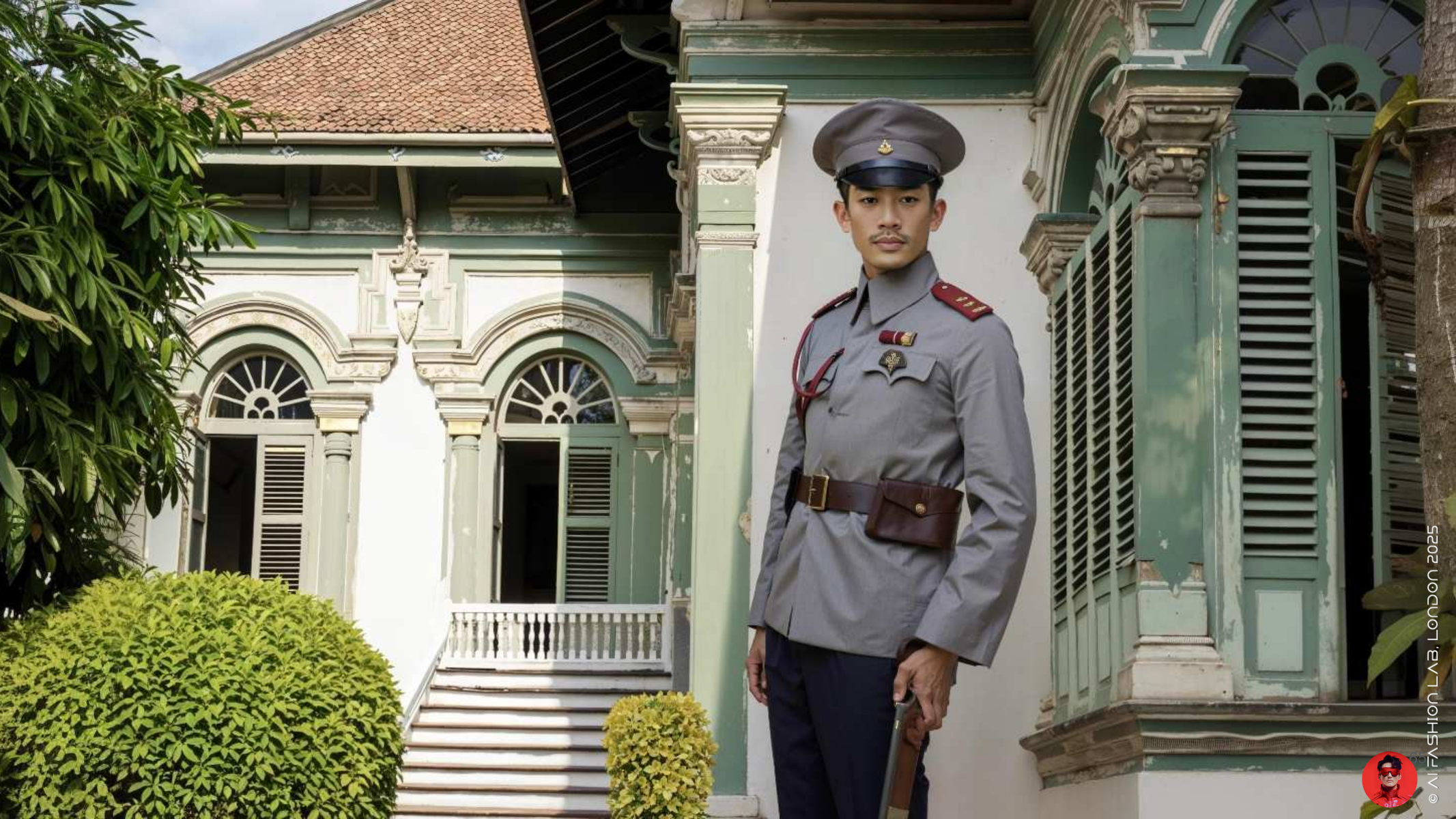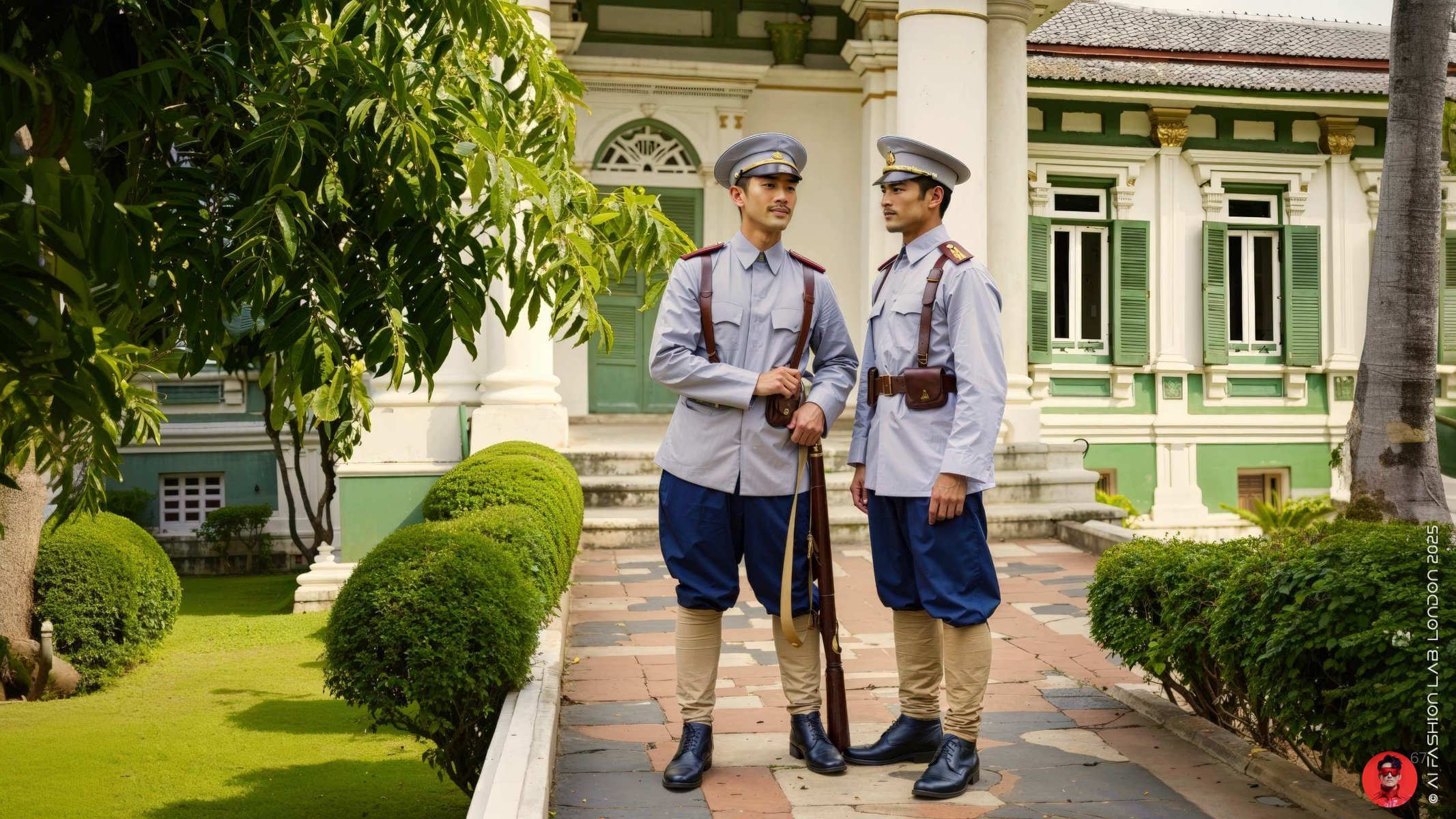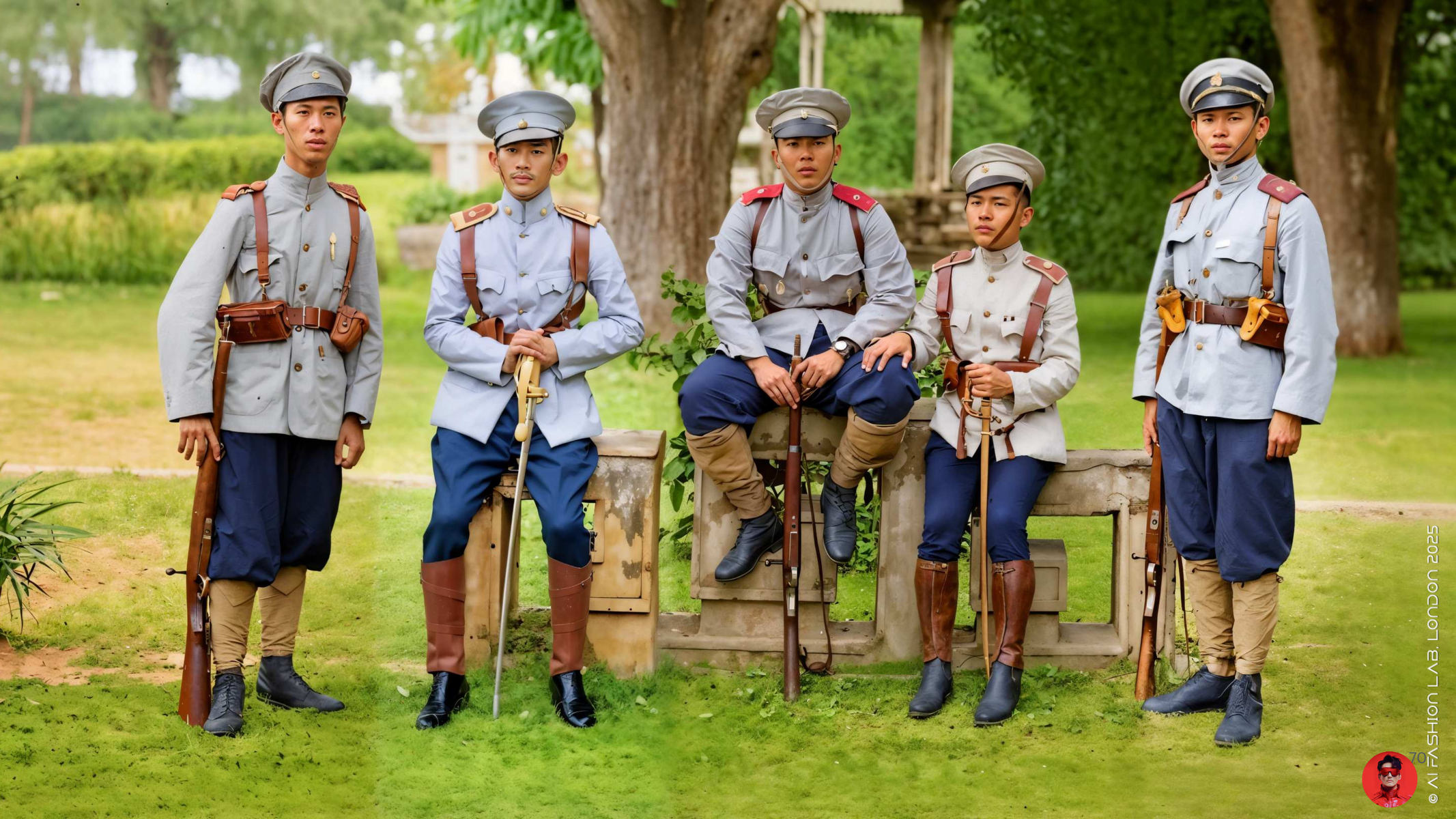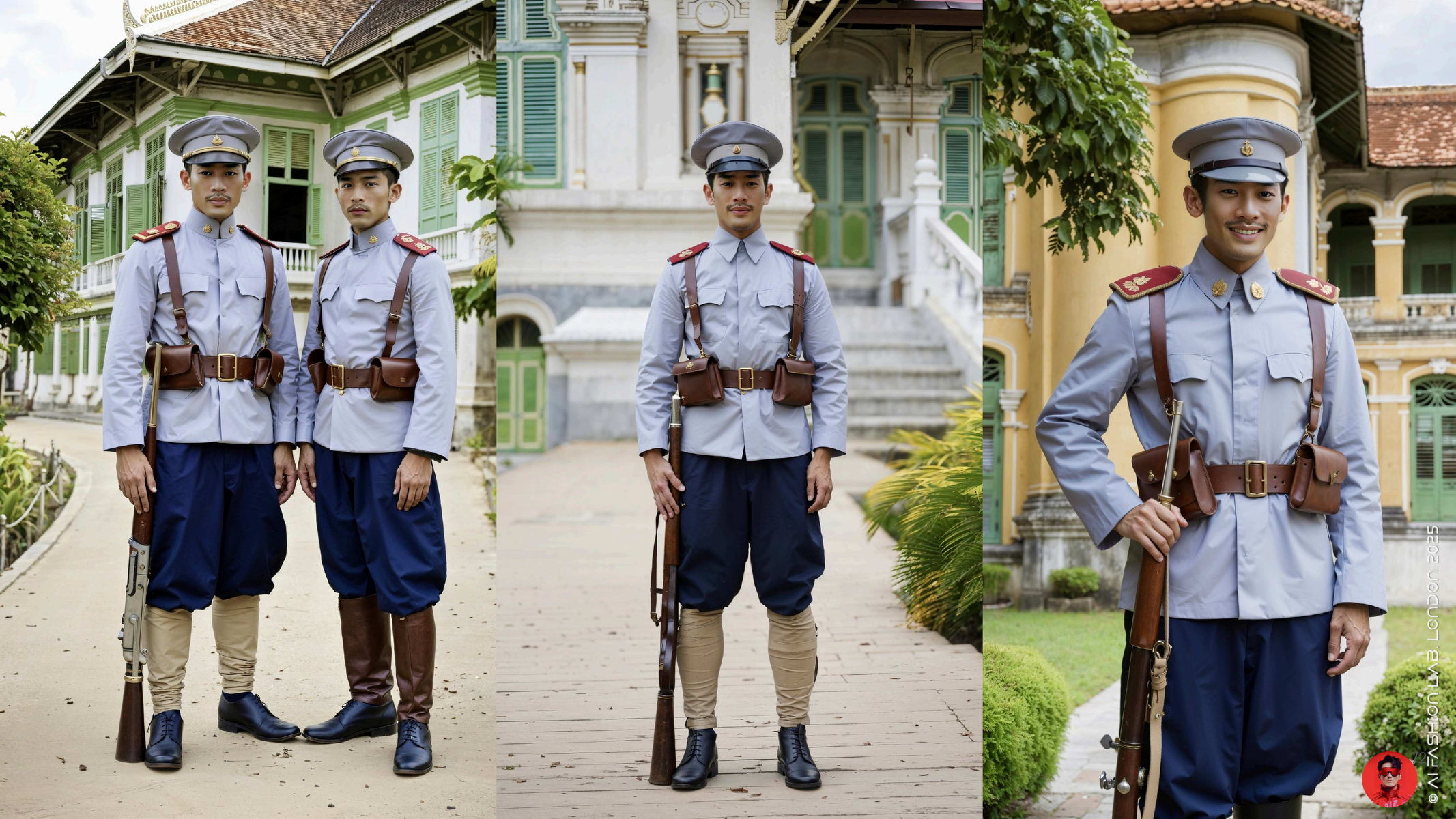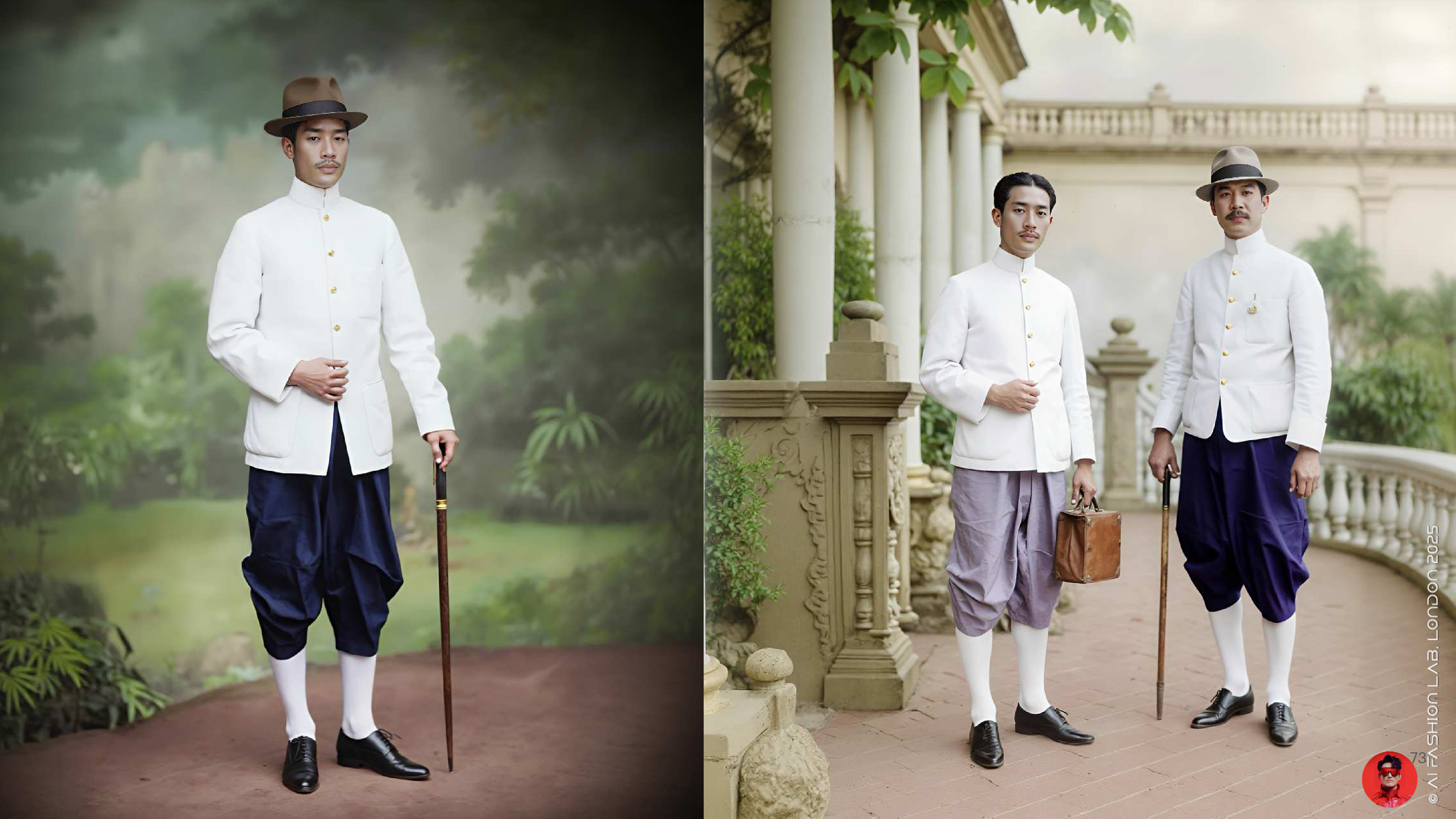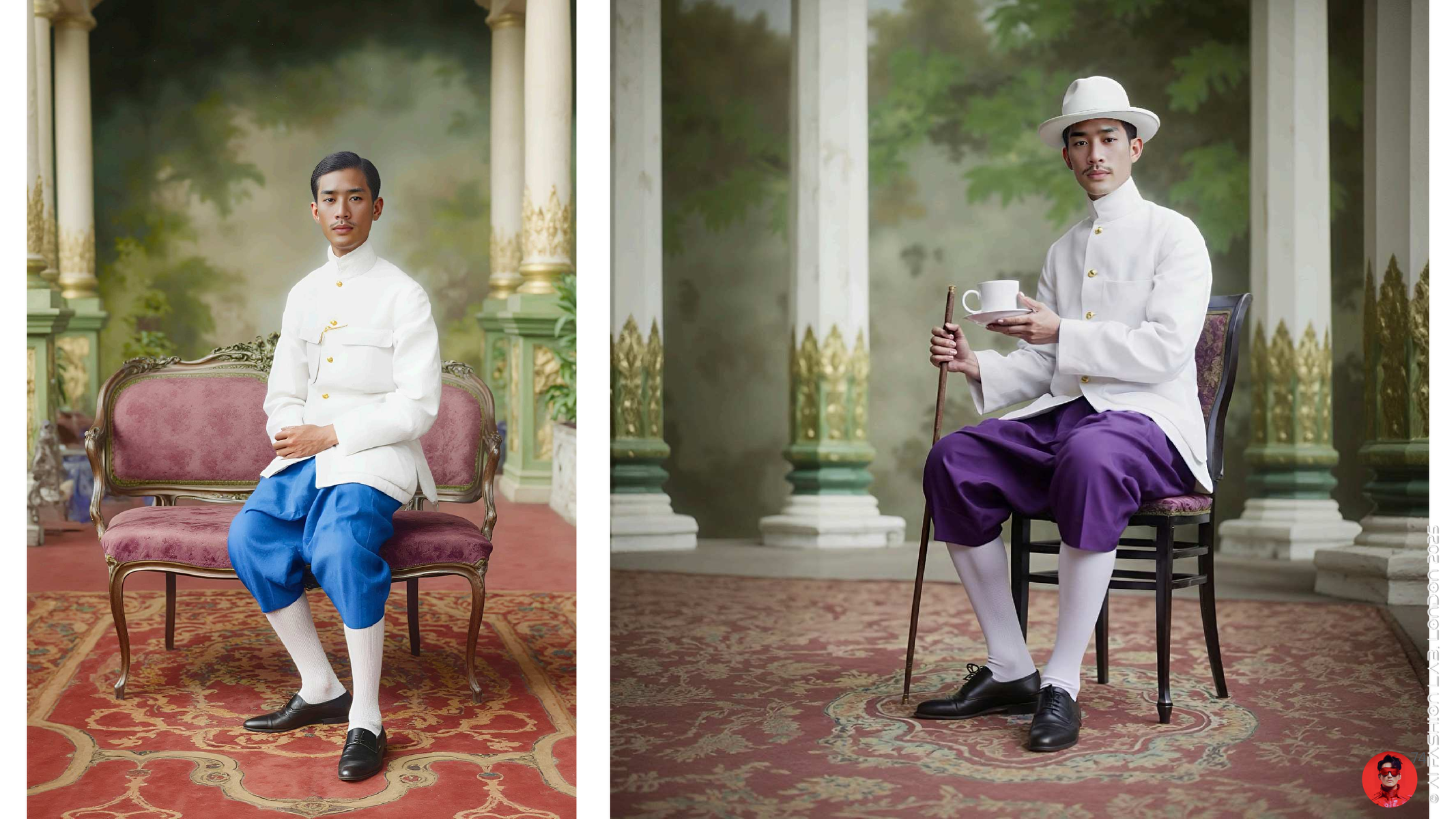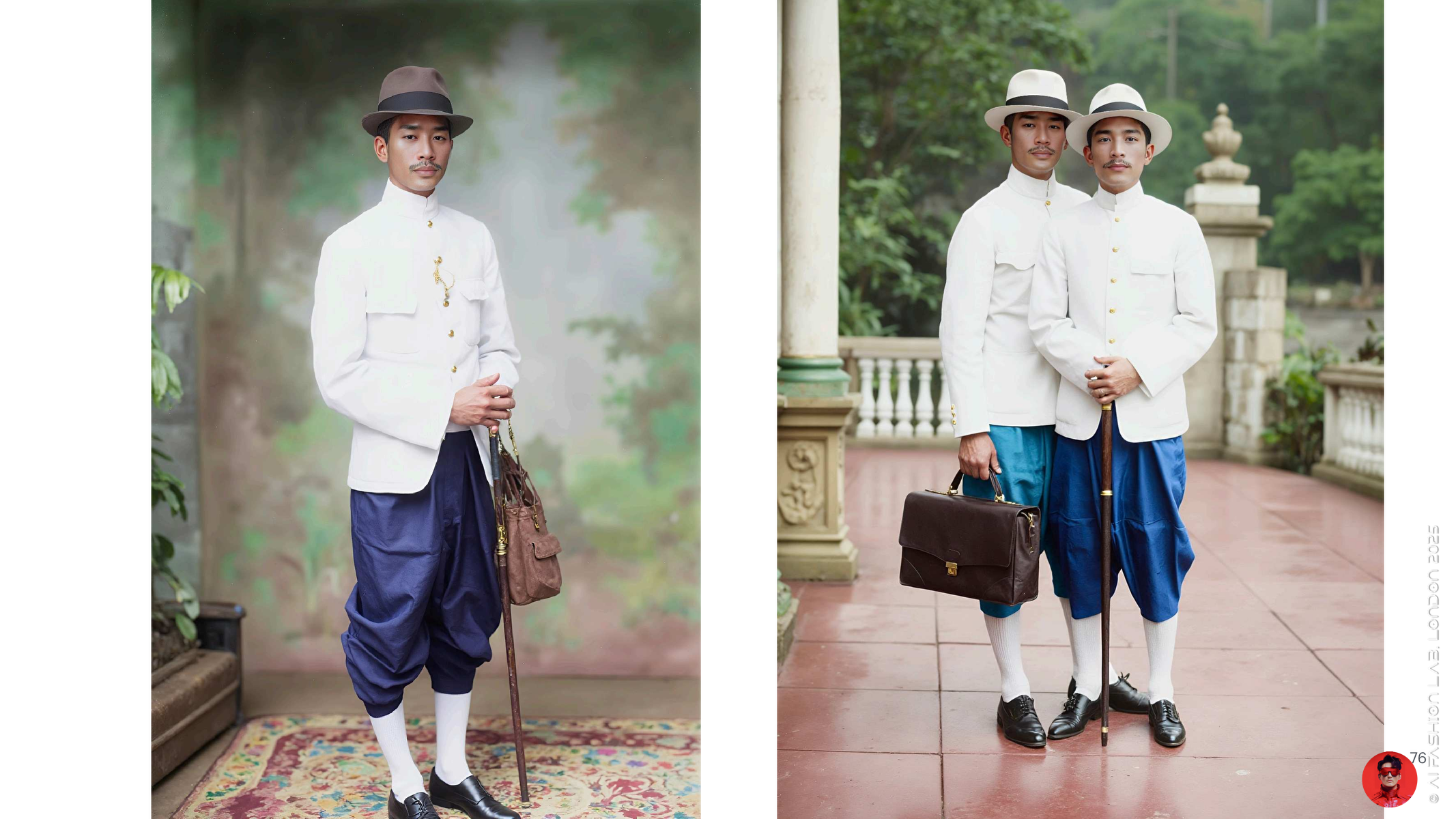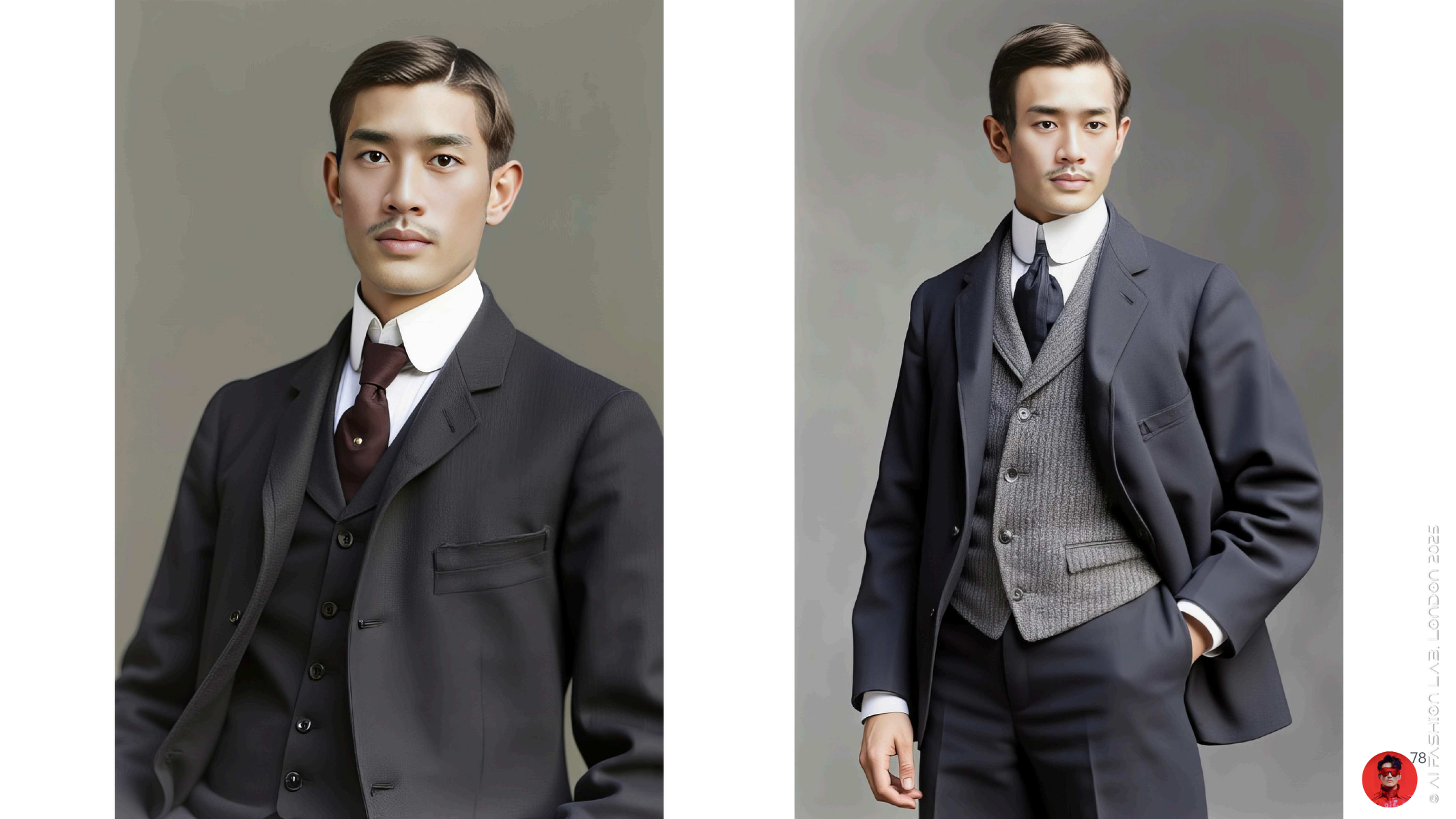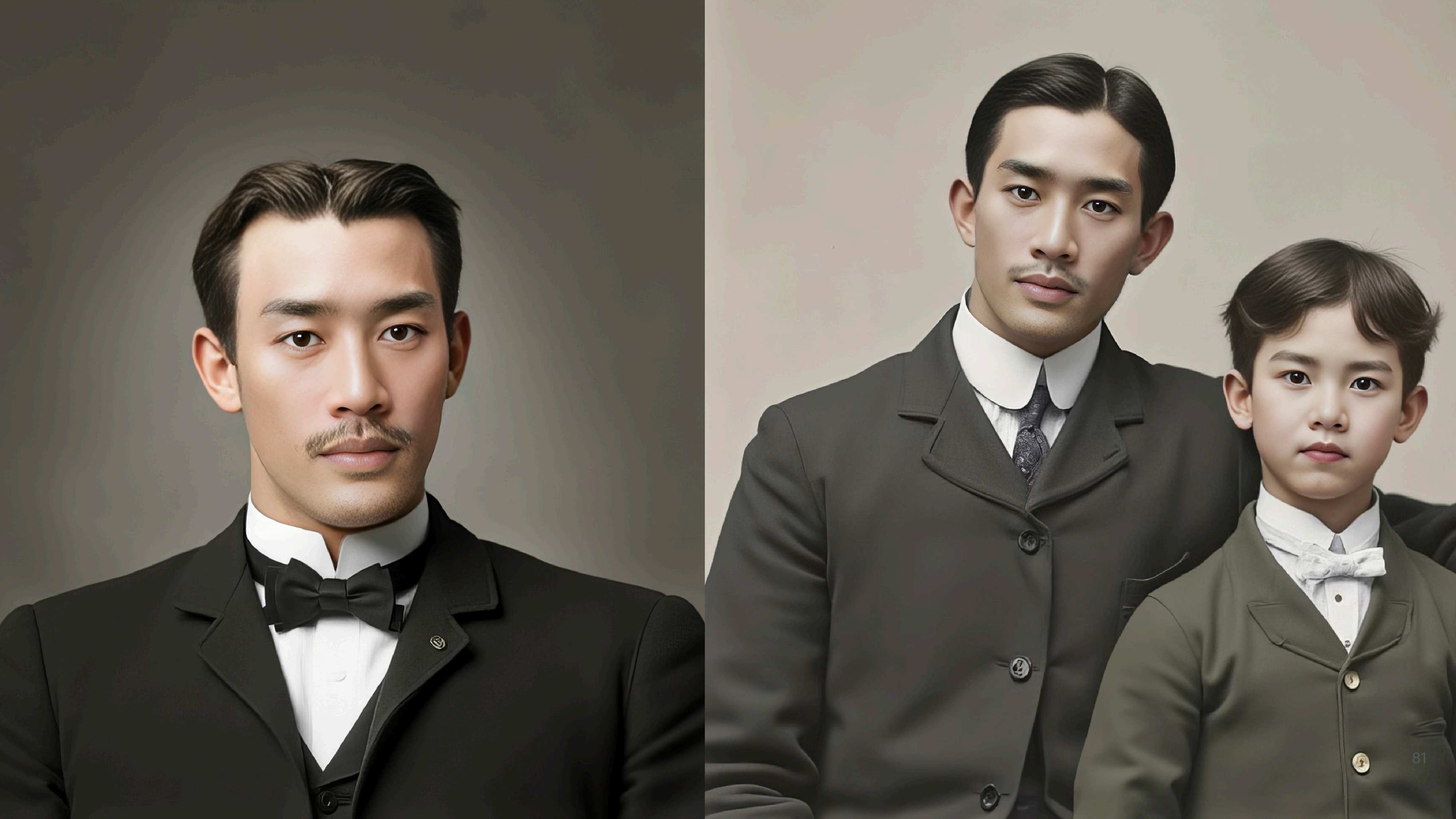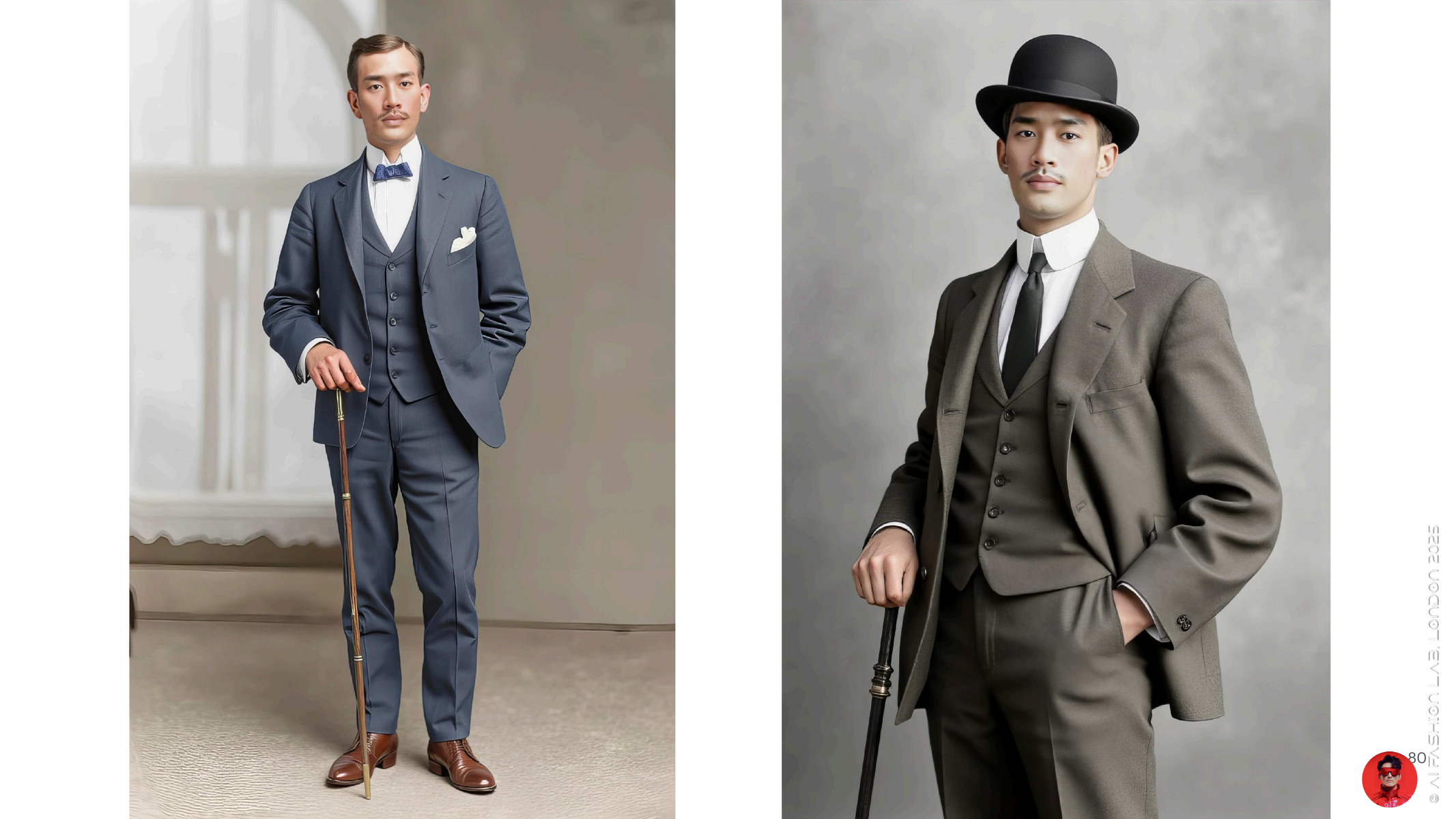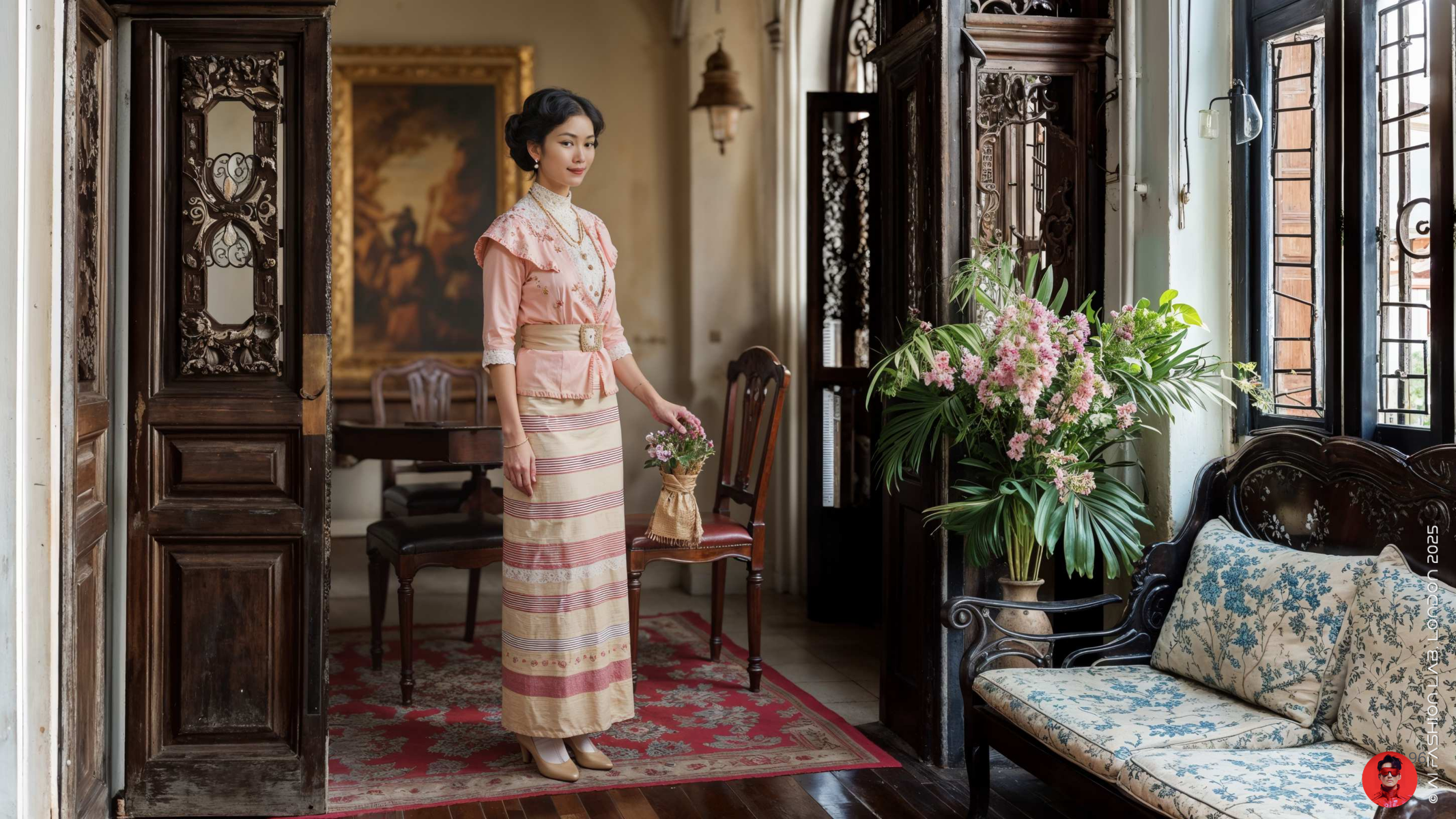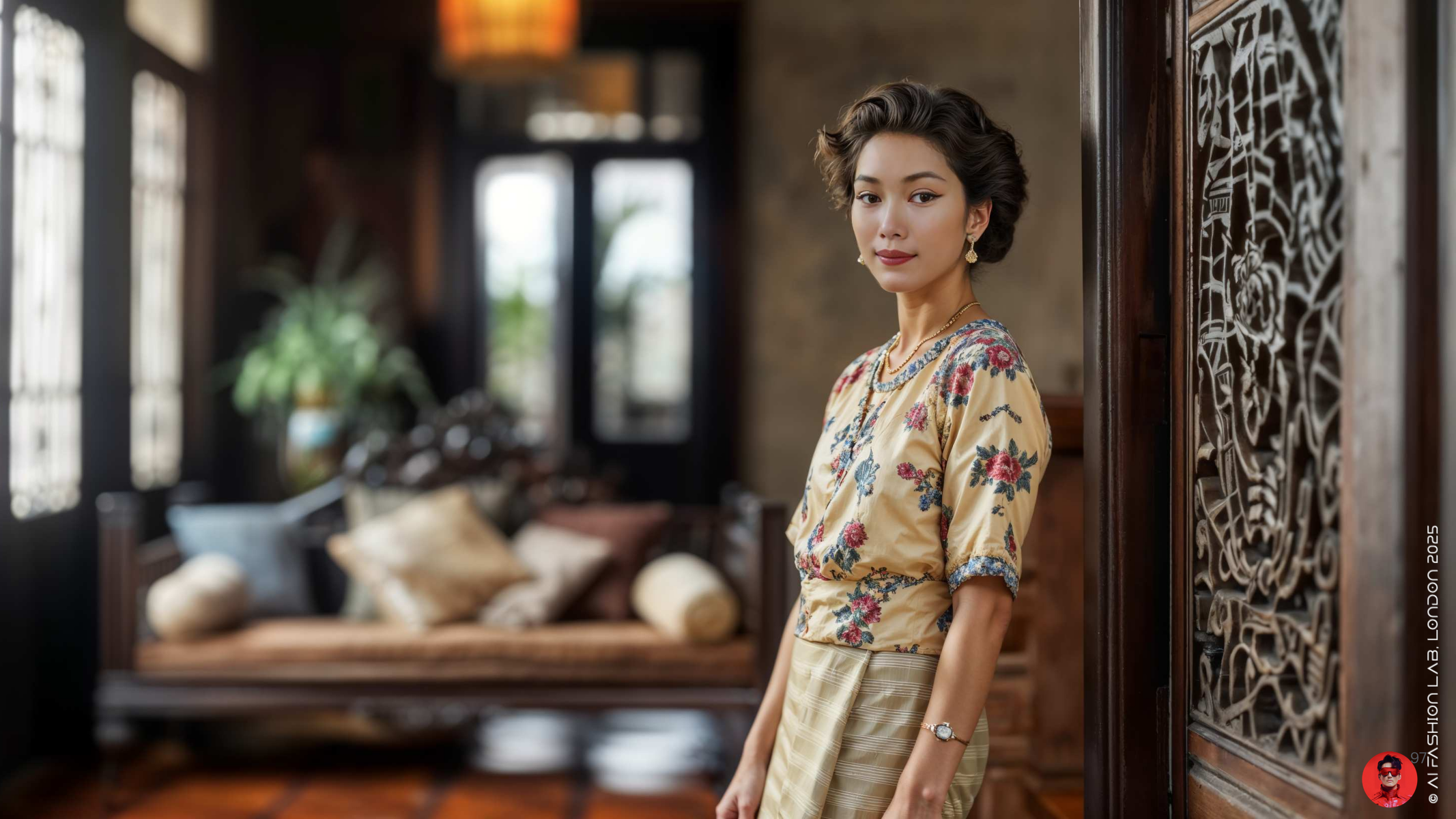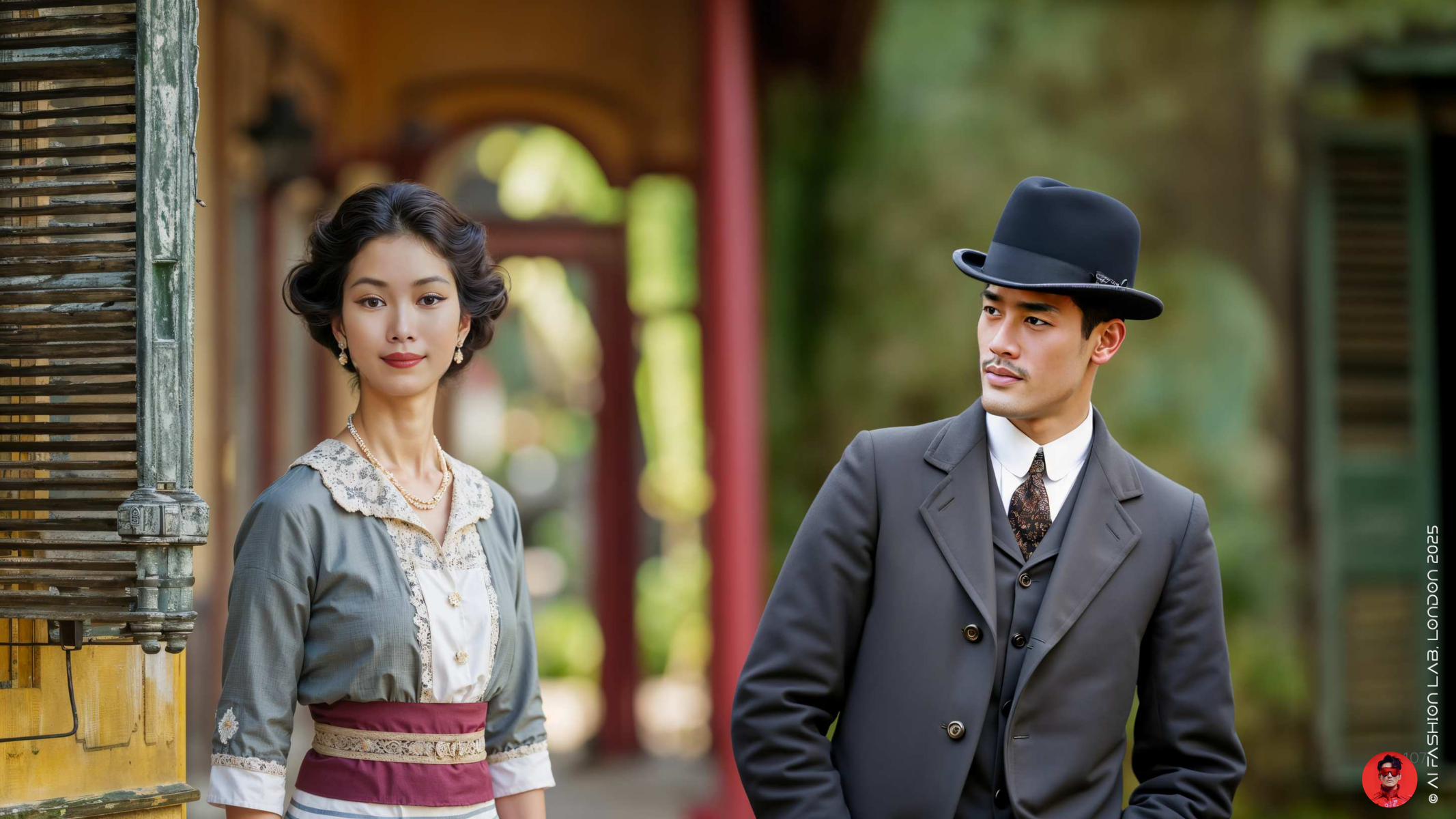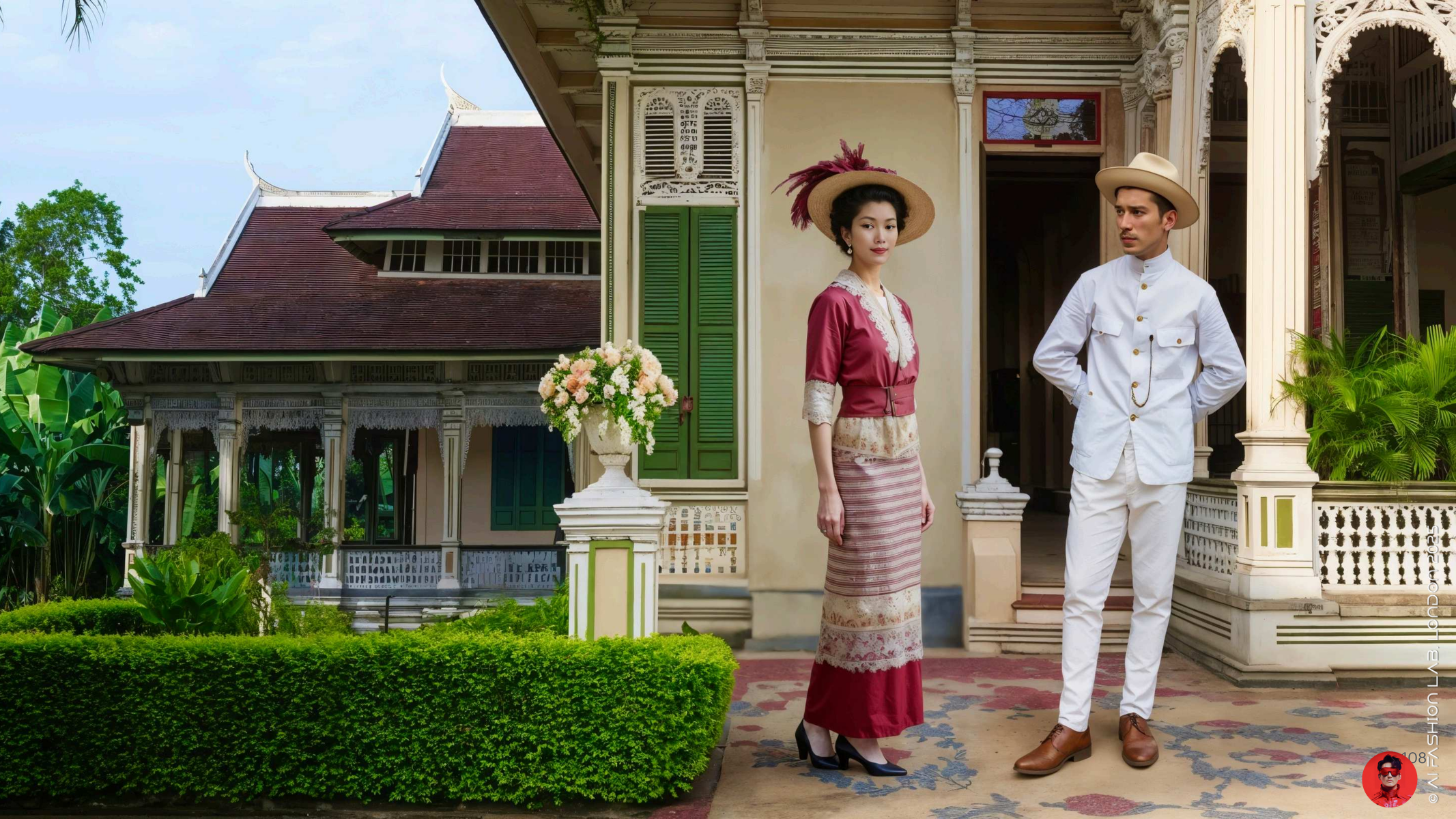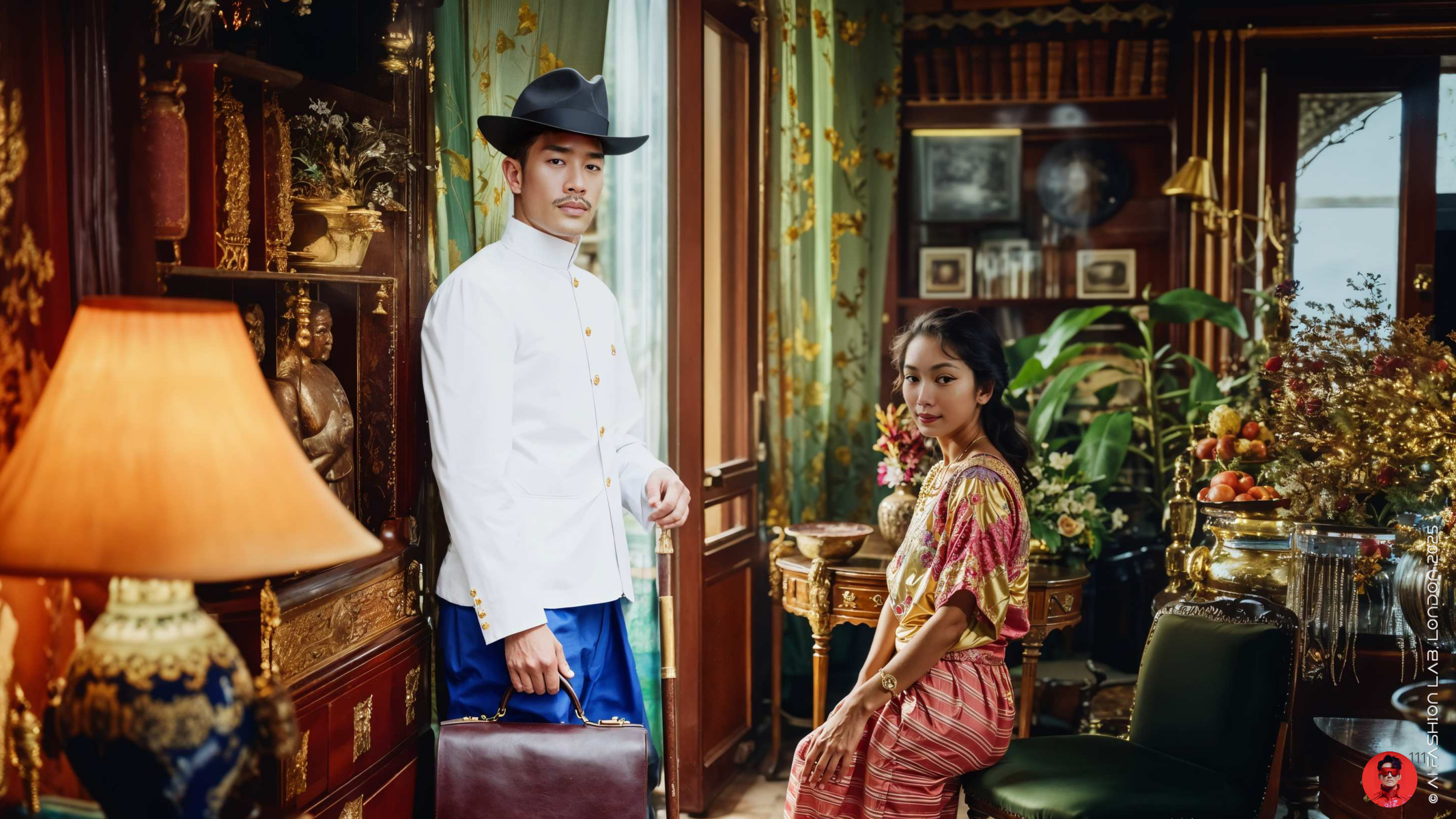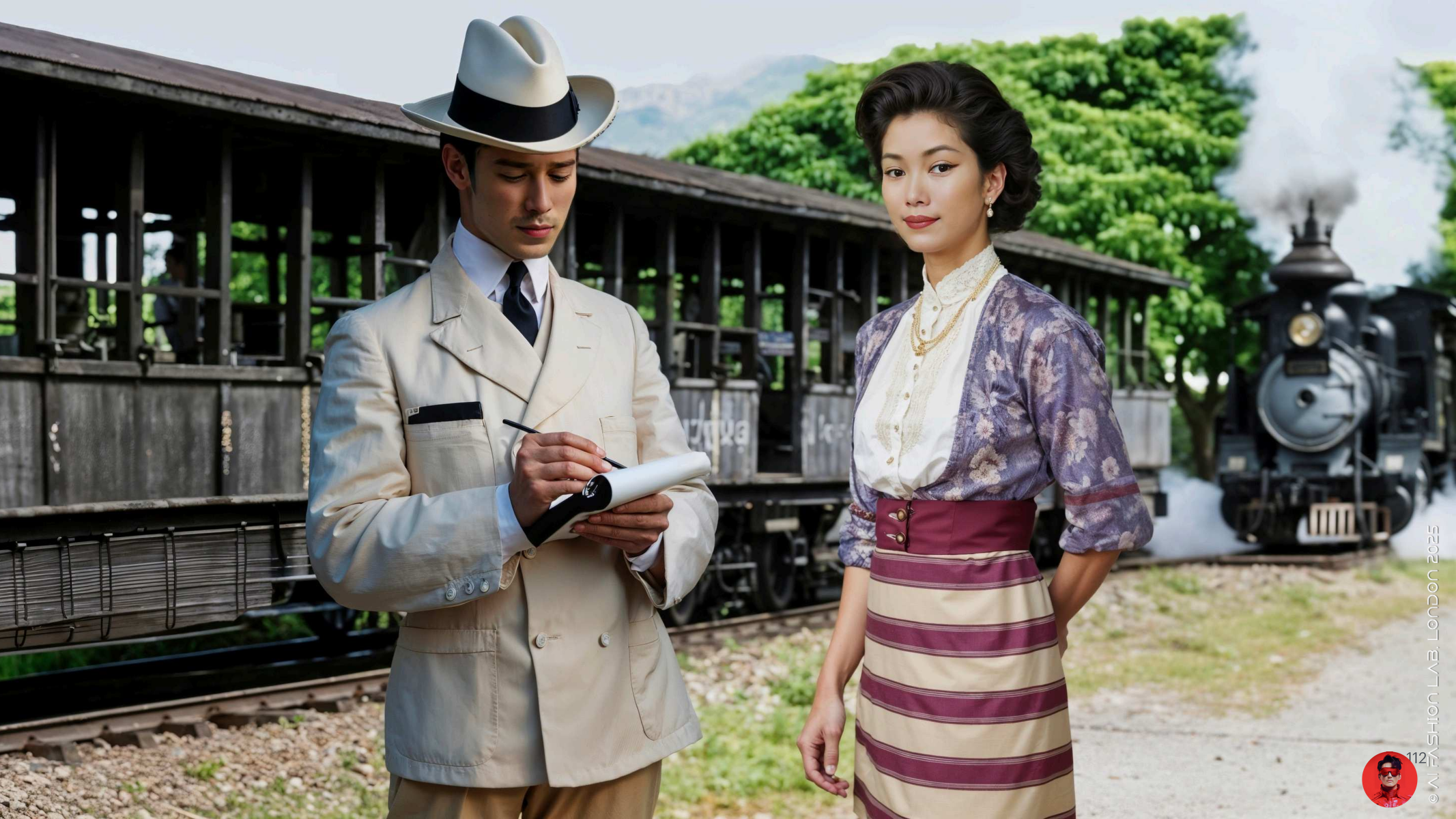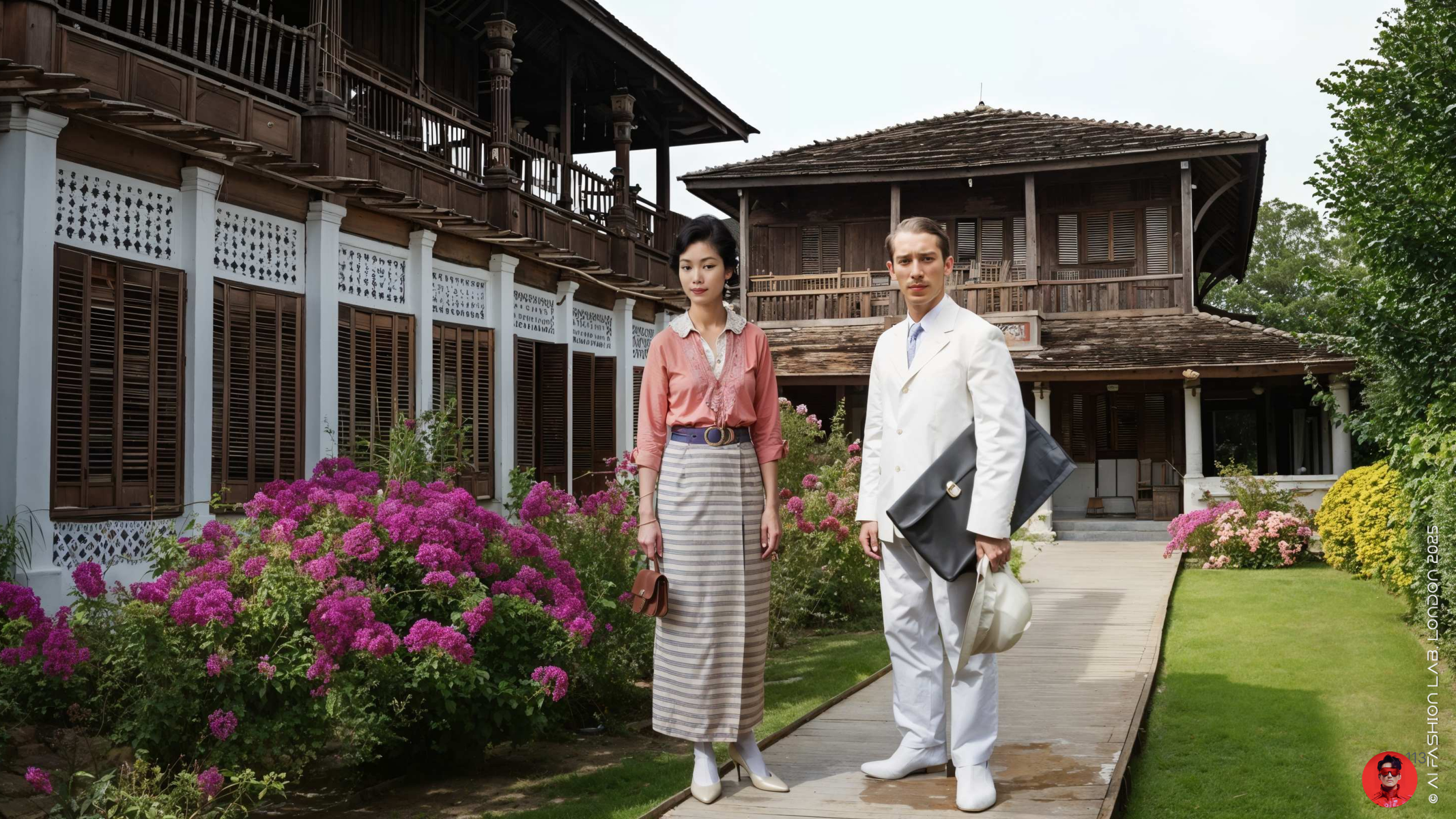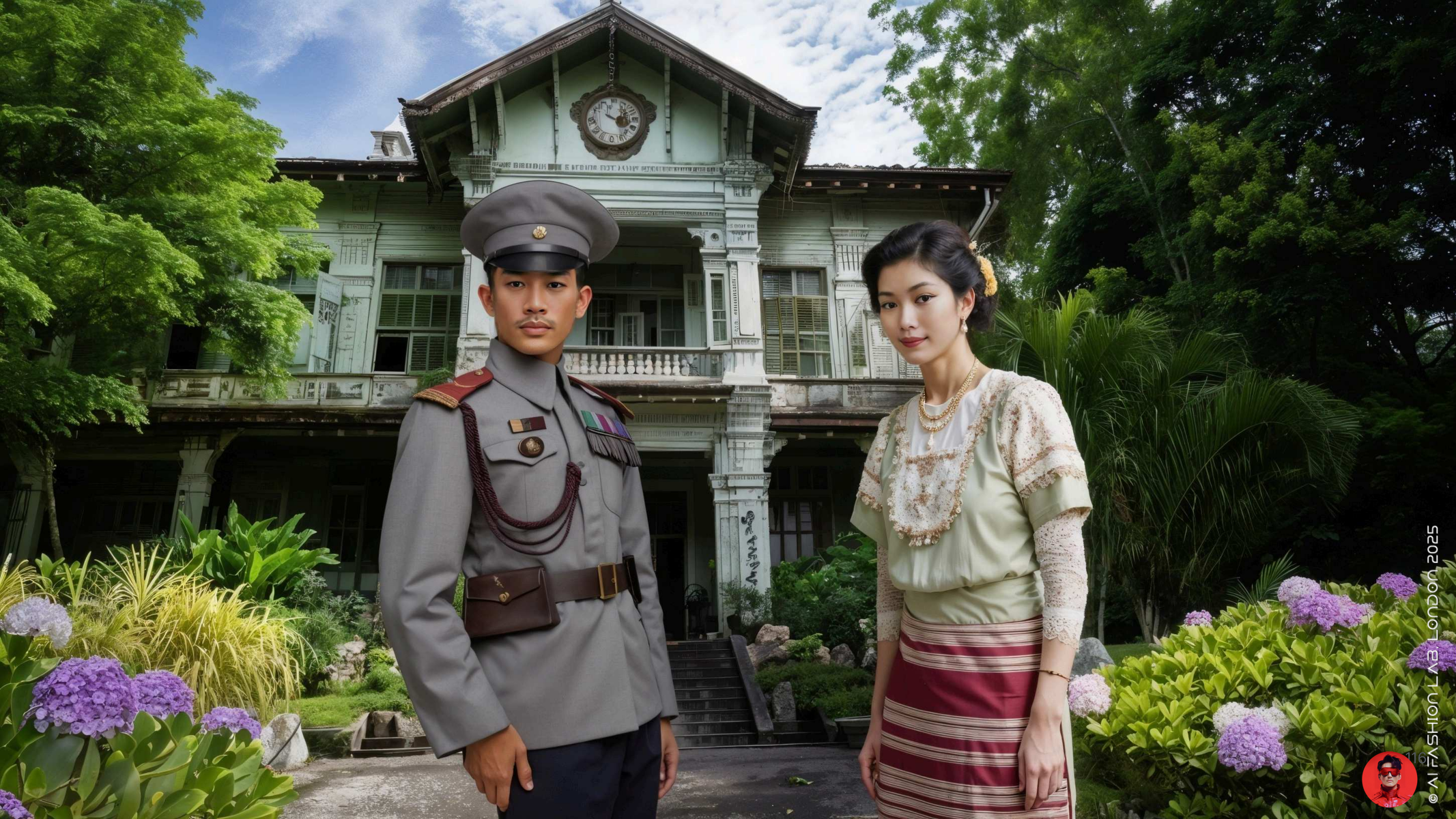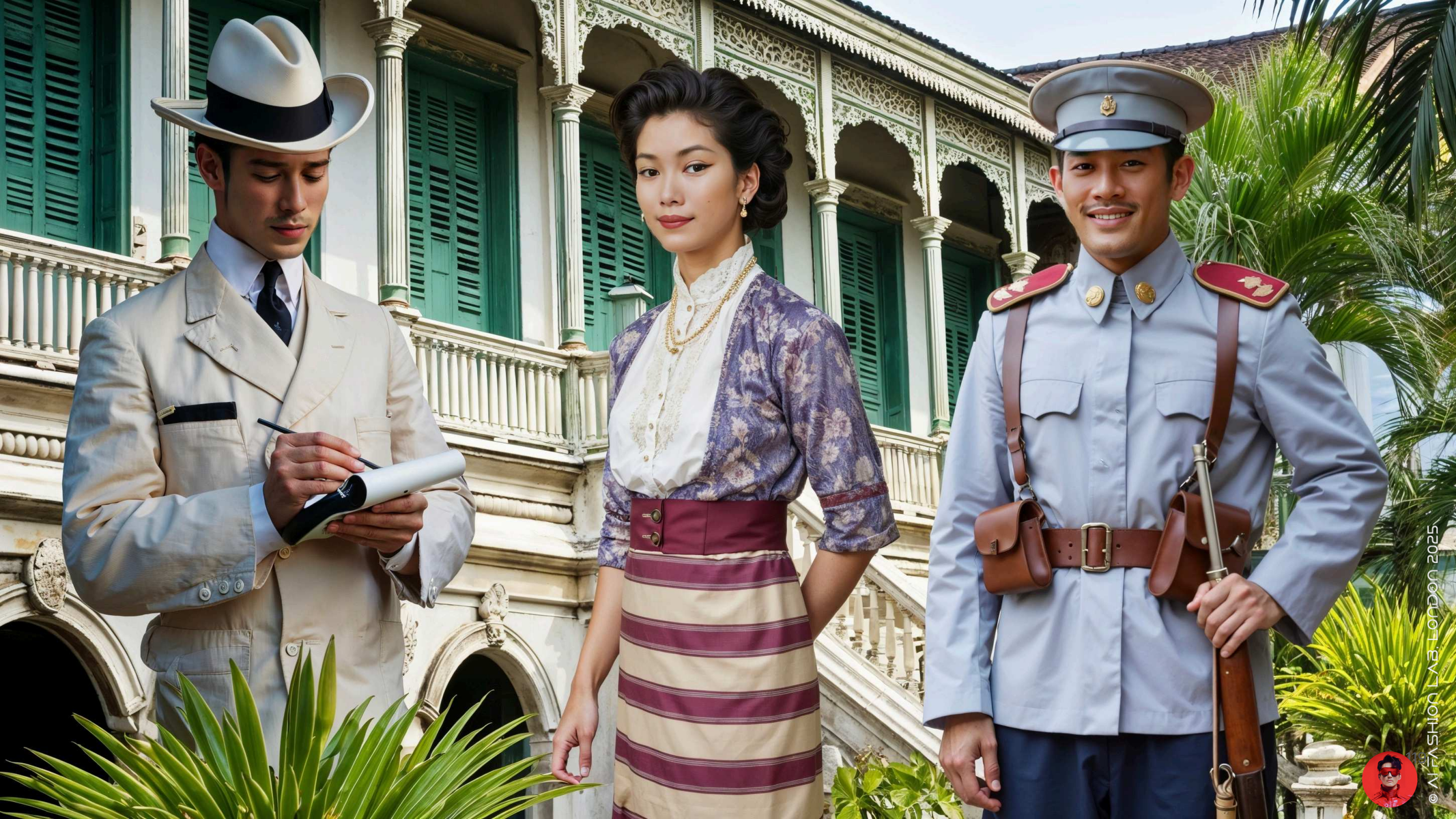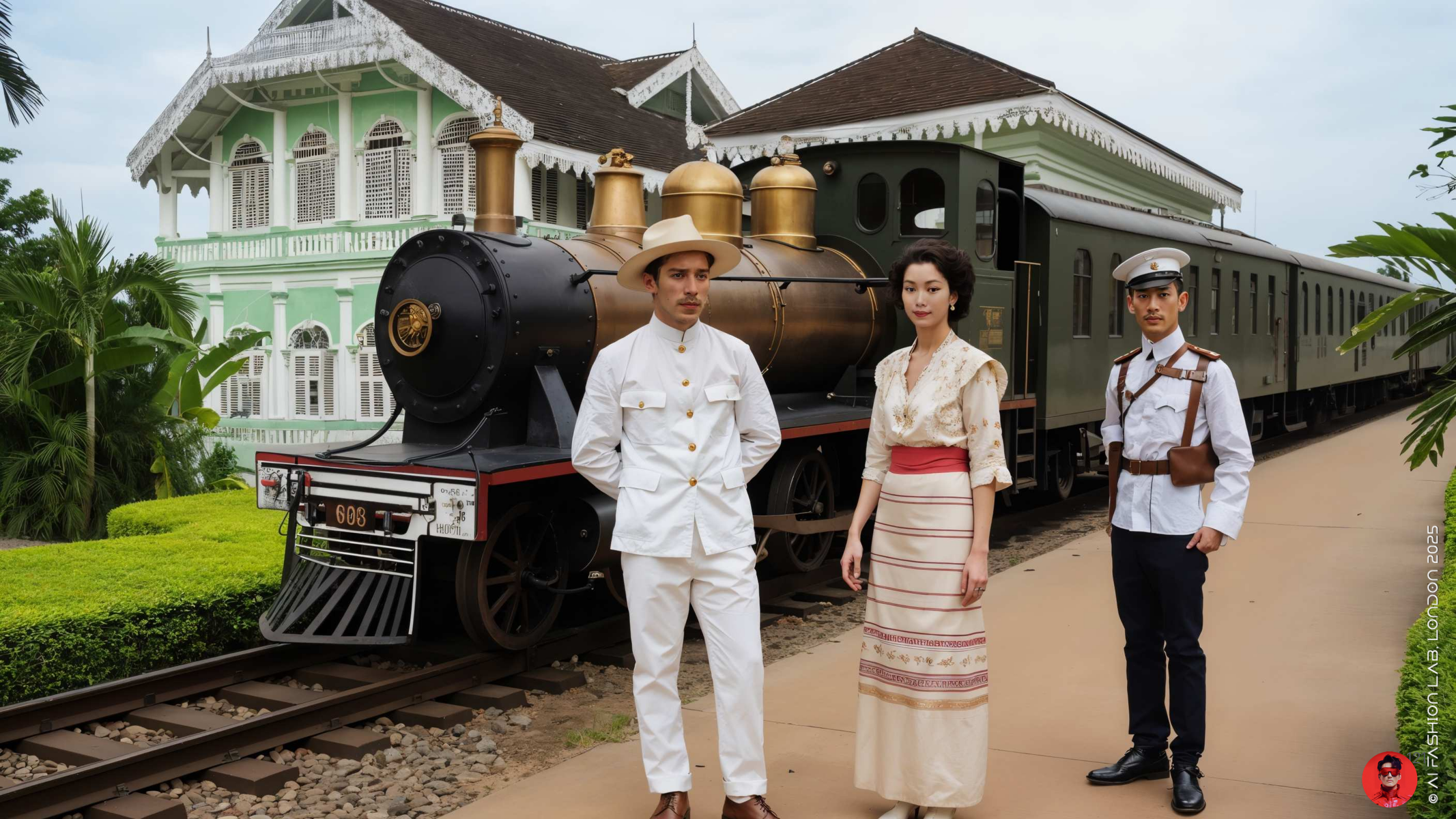การประยุกต์ใช้ AI เพื่อสร้างสรรค์ mood boards และสไตล์แฟชั่น: กรณีศึกษาแฟชั่นของสตรีในภาคเหนือของไทยระหว่างปี 1913–1919 (รัชกาลที่ ๖ ตอนต้น)
การประยุกต์ใช้ AI เพื่อสร้างสรรค์ mood boards และสไตล์แฟชั่น: กรณีศึกษาแฟชั่นของสตรีในภาคเหนือของไทยระหว่างปี 1913–1919 (รัชกาลที่ ๖ ตอนต้น)
ผมต้องการแสดงให้เห็นว่า AI สามารถนำมาใช้เป็นเครื่องมือสร้างสรรค์ในการออกแบบสไตล์แฟชั่นและการสร้าง mood board ได้อย่างมีประสิทธิภาพ เมื่อไม่นานมานี้ ผมได้จัดทำ mood board สำหรับภาพยนตร์เรื่องหนึ่งซึ่งมีฉากหลังอยู่ในภาคเหนือของประเทศไทย ระหว่างปี ค.ศ. 1913 ถึง 1919 โดยมีเค้าโครงเรื่องอิงจากบุคคลสำคัญทางประวัติศาสตร์ของภูมิภาคนี้ในช่วงก่อนและระหว่างสงครามโลกครั้งที่ 1
ภารกิจของผมคือการสร้างภาพลักษณ์ของแฟชั่นสตรีล้านนาในยุคดังกล่าว ซึ่งเป็นสไตล์ที่เคยมีอยู่จริง แต่แทบไม่มีการบันทึกไว้ในลักษณะเชิงแฟชั่นอย่างชัดเจน ผมต้องการออกแบบลุคใหม่ที่ทั้งใหม่ อ่อนหวาน และเน้นความเป็นผู้หญิง โดยยังคงอิงประวัติศาสตร์ แต่เติมจินตนาการเข้าไปเพื่อให้เรื่องราวดูร่วมสมัยและมีเสน่ห์ทางภาพ
โดยเริ่มต้น ผมได้นำภาพถ่ายขาวดำในยุคต้นคริสต์ศตวรรษที่ 20 มาทำการลงสีใหม่ด้วย AI เพื่อคืนชีวิตให้ภาพเหล่านั้น พร้อมทั้งใช้เปรียบเทียบแฟชั่นระหว่างหญิงชาวตะวันตก หญิงไทยในกรุงเทพฯ และหญิงล้านนาในภาคเหนือ กระบวนการนี้ช่วยให้ผมเข้าใจบริบทแฟชั่นในยุคนั้น และสามารถมองเห็นช่องว่างที่เปิดโอกาสให้สร้างสรรค์ภาพลักษณ์ใหม่ได้
จากการสังเกต ผมพบว่าสไตล์การแต่งกายของหญิงชาวเหนือได้รับอิทธิพลอย่างมากจากภาพลักษณ์ของ เจ้า หรือ เจ้าดารารัศมี โดยเฉพาะทรงผมเกล้ามวยสูงที่มีแรงบันดาลใจจากทรงผมญี่ปุ่น แม้จะดูงดงามและสง่างาม แต่สำหรับผมแล้ว มันยังขาดความสดใหม่และความหลากหลายทางอารมณ์ที่สามารถถ่ายทอดผ่านตัวละครหญิงได้อย่างลึกซึ้ง
ผมจึงตั้งใจออกแบบรูปลักษณ์ใหม่ที่ผสมผสานความเป็นตะวันตกแบบอ่อนหวาน สไตล์ของหญิงชาวกรุงเทพฯ และรูปทรงพื้นเมืองของเชียงใหม่เข้าไว้ด้วยกัน จากนั้นผมใช้ AI ฝึกโมเดลเพื่อให้เข้าใจซิลูเอตในยุคนั้น และสามารถสร้างรูปทรงใหม่ขึ้นจากการผสมผสานดังกล่าว ผลลัพธ์ที่ได้คือซิลูเอตใหม่ที่ผมตั้งชื่อว่า “Lanna Early Teens” ซึ่งกลายเป็นสไตล์ซิกเนเจอร์ที่ผมออกแบบขึ้นโดยเฉพาะสำหรับงานนี้
ลุคนี้มีลักษณะโดดเด่นด้วยซิลูเอตที่เกล้ายกสูงแบบตะวันตก เสริมด้วยเสื้อบลาวส์สไตล์ต้นยุค 1910s เสื้อหลายตัวเป็นแขนสามส่วน มีการซ้อนชั้นสองชั้น และมักมีคอเสื้อต่ำ บางชุดมีปกแบบกะลาสี จับคู่กับผ้าซิ่นแบบเชียงใหม่ ถุงน่องสีขาว และรองเท้าวินเทจแบบยุโรป
สำหรับชุดของผู้ชาย ผมออกแบบให้มีการผสมผสานระหว่างแฟชั่นชายตะวันตกช่วงปลายยุคเอ็ดเวิร์เดียน เช่น เสื้อเชิ้ตคอถอดได้ และสูทสามชิ้น เข้ากับชุดทหารในสมัยรัชกาลที่ 6 ของไทย ซึ่งผมเคยออกแบบไว้ก่อนหน้านี้ โดยใช้เสื้อสีเทากับกางเกงสีน้ำเงินเข้ม นอกจากนี้ ผมยังเพิ่มชุดขาวแบบอาณานิคมซึ่งประกอบด้วยเสื้อคอจีน กางเกงเข้าชุด และหมวกอาณานิคม เพื่อสะท้อนอิทธิพลจากโลกภายนอกในยุคนั้น
กล่าวโดยสรุปแล้ว ผลงานนี้เป็นการจินตนาการใหม่ของแฟชั่นในภาคเหนือของไทยระหว่างปี 1913–1919 โดยใช้ AI เป็นเครื่องมือหลักในการออกแบบ ทั้งในด้านภาพ และการสร้างแฟชั่นประวัติศาสตร์ ซึ่งพิสูจน์ให้เห็นว่า AI เมื่อถูกนำมาใช้อย่างสร้างสรรค์ ย่อมสามารถเป็นพลังขับเคลื่อนที่น่าทึ่งในงานออกแบบแฟชั่นได้อย่างแท้จริง
Demonstrating the Creative Use of AI in Fashion Moodboarding: A Case Study on Northern Thailand (1913–1919)
I want to demonstrate how AI can be used creatively in developing fashion styles and mood boards. Recently, I produced a mood board for a film set in Northern Thailand between 1913 and 1919. The story is based on historical figures from the region, during the period before and during the First World War.
My task was to visualise the fashion style of northern Thai women from that era—styles that did exist but were poorly documented. I wanted to create a fresh and distinctly feminine new look that reimagined the period with artistic sensitivity. To do this, I relied entirely on AI tools to shape my imagination and produce visuals that felt both plausible and original.
I began by researching Western women's fashion in 1913, then examined the styles worn by women in Bangkok and those in Northern Thailand. I quickly realised that fashion in the North was heavily influenced by the image of Chao Dara(local nobility), particularly with Japanese-inspired upswept hairstyles. While elegant, I found this aesthetic rather uninspiring and too conservative for the story I wanted to tell. I aimed to create something new—more modern, womanly, and subtly Westernised.
By blending three sources—early 1910s Western fashion, the soft femininity of Bangkok aristocratic style, and elements of traditional Chiang Mai silhouettes—I trained an AI model that could understand and reinterpret these influences. The result is a completely new silhouette I call Lanna Early Teens, a signature style I developed specifically for this project.
This look features a Western-inspired upswept silhouette with blouse-like bodices from the early 1910s. Typical garments include double-layered blouses with three-quarter sleeves, low necklines, and sometimes sailor collars, paired with traditional Chiang Mai-style tubular garments, white stockings, and vintage-style shoes.
For the male costumes, I incorporated a blend of late Edwardian Western fashion—such as detachable collars and three-piece suits—with Thai military uniforms from the reign of King Rama VI. These included grey tunics and navy breeches, which I had already designed for a previous post. I also introduced colonial-style white uniforms with mandarin collars, matching trousers, and colonial pith helmets to reflect the diverse influences of the period.
In short, this is a reimagined look for the fashion era of 1913–1919 in Northern Thailand. It demonstrates that AI, when used creatively, can be an incredibly powerful tool for historical fashion design, moodboarding, and costume illustration.
#aifashionlab #AI #aiartist #aiart #aifashion #aifashiondesign #aifashionstyling #aifashiondesigner #fashion #fashionhistory #historyoffashion #fashionstyling #fashionphotography #digitalfashion #digitalfashiondesign #digitalcostumedesign #digitaldesign #digitalaiart #ThaiFashionHistory #ThaiFashionAI












